Some people might find this nice - artbook reviews: https://www.rockpapershotgun.com/2016/09/05/best-game-artbooks/
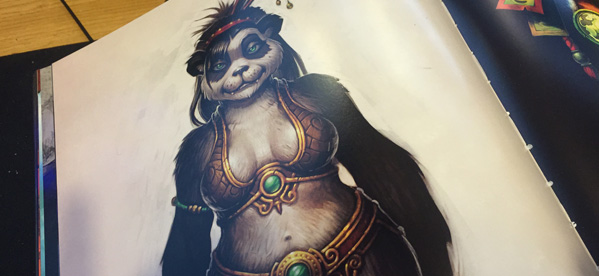

Some people might find this nice - artbook reviews: https://www.rockpapershotgun.com/2016/09/05/best-game-artbooks/

















The RPG Scrollbars: Warcraft: Lord Of The Clans
Richard Cobbett on September 12th, 2016 at 1:00 pm.
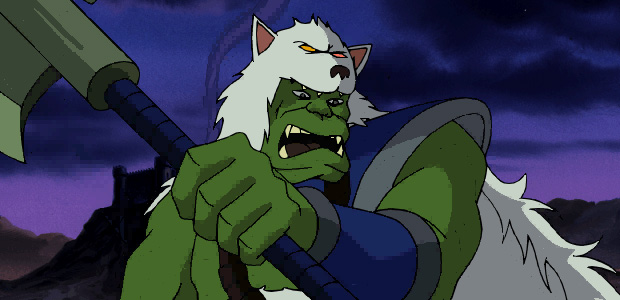
Way back in the 90s, Blizzard infamously planned to expand its Warcraft strategy game universe by jumping into adventures. Ever since then, Warcraft: Lord Of The Clans has been one of the PC’s more famous ‘lost’ games – one of the few known to be almost complete at the point of cancellation rather than just existing as a tech demo and a few screenshots. It was canned in 1998, with Blizzard turning down a petition to finish the job from fans back in the day when not every single blasted action or inaction spawned those.
And then last week, the whole thing finally leaked online.
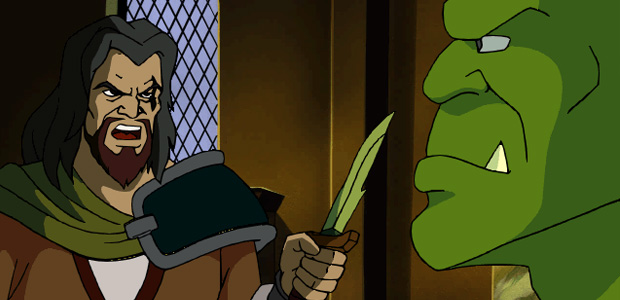
Due to the leak thing, I was umming and aahing a bit over talking about this one. The simple fact though is that despite being a ‘lost’ game, we know more about Lord of the Clans than many that actually got released. It’s leaked before on a smaller scale, with a full longplay on YouTube (this version includes the cutscenes, to various points of completion). One of the Caverns of Time missions in World of Warcraft takes players back to its events, with future Horde Warchief Thrall escaping from Durnholde Castle. The whole story was also novelised in a book called, yes, Lord of the Clans.
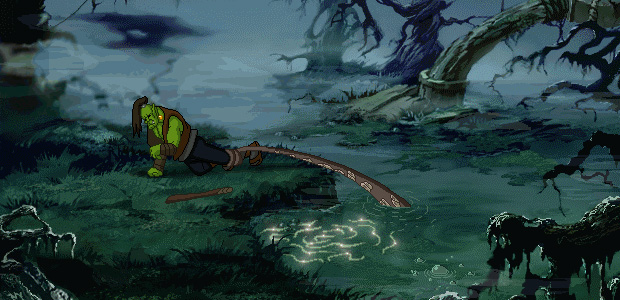
In short, while download links are no doubt even now being struck down faster than you can shout “For Doomhammer!”, and we’re not advocating downloading dodgy code, it’s not like we’re looking at a half-finished copy of Project Titan full of future game ideas here. It’s about as dangerous to Blizzard now as the Millennium Bug.
That said, just to be on the safe side, all pictures are not in fact from Lord of the Clans, but from a specially written in-house tool that randomly assigns colours to every pixel of a 640×480 board with the goal of ultimately creating every image that could possibly exist. Cthulhu’s presidential nomination. An apology from literally everyone involved in the Farscape videogame. A scandalous rendezvous between Donald Trump and Mayor McCheese. Maybe some things look like Lord of the Clans. But rest assure, anysimilarities are purely coincidental. And no animals were harmed in their making.
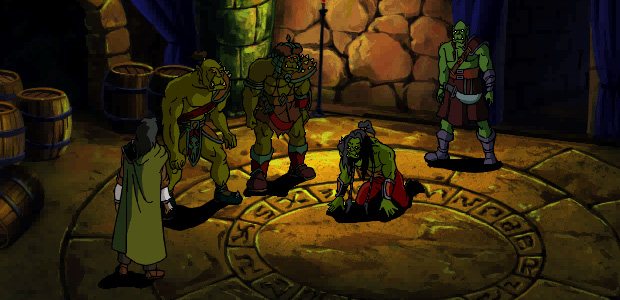
As disappointing as Lord of the Clans’ cancellation was for fans, looking back it was definitely the right decision. The plot revolves around Thrall as an orphan brought up by the evil Lord Blackmoore – family motto, “Nil Morius Black” – as part of an honestly pretty silly plan to create the ultimate warrior and have him lead his army so that he can become King of all Azeroth. You know this guy’s probably a few scraps of Runethread short of a Netherweave bag when he comes across a dead orc mother cradling a tiny child, picks up and immediately starts laughing his ass off to the heavens. Basically, if you ever find yourself doing anything remotely like this, you = the baddy.
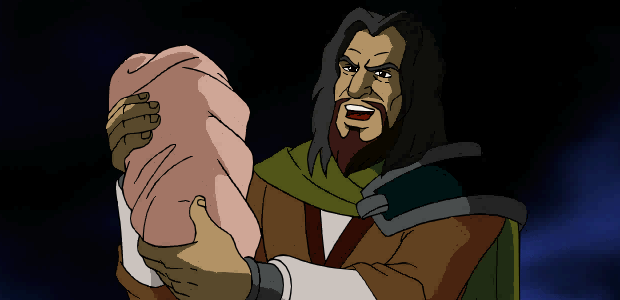
Anyway, as with most plans that begin with a psychopathic giggle, this goes wrong in several ways. First, the constant abuse teaches Thrall all about biding his time and being clever, which Blackmoore approves of instead of bulking him up to being a big tough orc who obeys orders and feels any sense of actual loyalty to his master. Second, after years and years of training, Thrall’s refusal to kill a fellow orc gets him thrown in the dungeon and scheduled for execution instead of a “Okay, so, we’ve got a bit more work here”. Third, in breaking free and exploring the world, Thrall becomes nothing short of a Horde leading powerhouse whose intelligence will forever make it hard to get another truly good grudge match going between them and the Alliance.
Even at the start though, the pieces don’t click. Lord of the Clans is an adventure that could have worked circa 1995/1996, but by its intended release date at the end of 1998? No. It doesn’t look right. It doesn’t feel right. It’s an adventure visibly designed by inexperienced hands, which Blizzard acknowledged at the time by hiring IF legend Steve Meretzky to polish and rewrite and design great big chunks of it. More than that though, it’s not a ‘Blizzard’ game. Blizzard’s greatest skill has always been taking other peoples’ concepts and polishing and refining them to a shine. World of Warcraft for instance wasn’t in any way a bolt out of the blue, but the best bits of diku muds in particular wrapped up and made approachable to the wider audience.
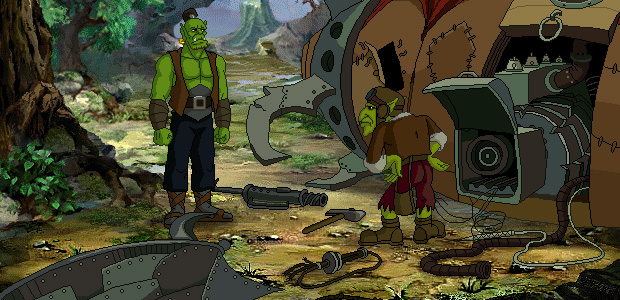
Warcraft Adventures… it’s got nothing to add. It takes the interface from Full Throttle, but few of that game’s inspired thoughts on how to make a tough character into a different kind of adventurer than the usual inventory-packing geek. Thrall is bland, inappropriately quippy, and just generally stock. It comes from an RTS lineage, but can’t seem to find any way of integrating that into the mix in the way that, say, Quest For Glory merged RPG elements with its adventuring. There’s the occasional flourish, like using magic scrolls to solve puzzles, but not to any great extent – not even the extent of potion mixing in Kyrandia 2. There’s no ambition beyond ‘make it solid’. There’s no burning desire to improve the genre. It’s not a terrible adventure, but there’s no point in the 90s when it would have been a great one. It wants to be Full Throttle, but it’s closer to the likes of Dragonsphere, Inherit the Earth and Touche. Certainly Bill Roper was right when talking about its cancellation in 1998 that it was at least three years late and could only have diluted Blizzard’s already firm reputation for quality. Though it would have been interesting to see what the final version might have been.
That said, it’s definitely got its moments, including the hilarious sight of future World of Warcraft super-dragon Deathwing smoking a hookah, and Thrall defeating it in single-combat by cutting open a dead cow it’s about to swallow in one gulp, indeed being swallowed, and then trekking through his dragon guts with the help of a jetpack… yes, a jetpack… to cut off his flame. If only the WoW fight had been so much fun or the whole thing had been rooted in such satisfying physicality. What it does share with Full Throttle is that those bits are, by far, the most satisfying and fitting.
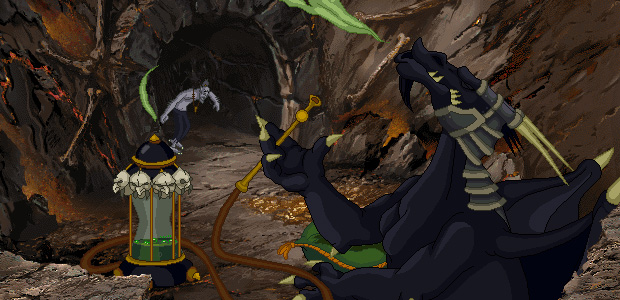
And on top of that, it’s strangely pretty, especially since the art was handled by Animation Magic. If you’ve never heard of them, suffice it to say that their animation portfolio in the 90s was nigh indistinguishable from Satan’s dream journal. I still can’t believe Blizzard of all companies gave them a shot on this project. Hell, I remember being convinced that at some point they’d found a genie and been given a choice between never having trouble getting work, and being able to draw. I shall let their work on games like King’s Quest VII, I.M. Meen and its sequel, and the infamous Legend of Zelda games speak for itself and settle comfortably into your nightmares.
To give full credit though, while you’re not going to mistake Lord of the Clans’ animation for Disney or Don Bluth at their best, it’s high quality stuff. Mostly. As leader of the Frostwolves, Thrall does look more like he’s skinned a particularly large cat. But let’s not quibble. By general 90s animation standards, never mind Animation Magic’s usual ‘stick a stylus in our sphincter and draw with our bottoms’ standard, this is a game with no expense spared on character animation and location art and background details, like the pungent breath of a glowing skull cave.
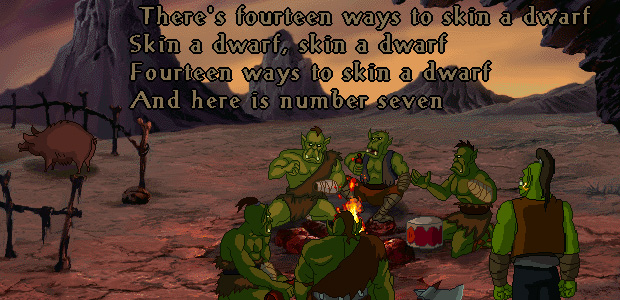
How did the code finally get out? Unconfirmed, but as said, code has been floating around for a while. It’s clearly in development. Cutscenes have almost no synchronisation, loads of music and sound effects and other assets aren’t there. Some dialogue is performed by a speech synth. But, since nobody’s going to actually download and play it without knowing the story, it’s not as if the rough edges or occasional unfinished movie here and there casts any poor light on Blizzard. Honestly, the amount of polished stuff makes them look good for making the right decision and pulling the plug, but it’s still not even close to being an Old Shame.
Now though, it’s an interesting piece of history in a medium that’s often far too quick to throw it away. Things have changed a bit recently with many an old game showing up on the likes of GOG and Steam, but even then, many hits like No One Lives Forever are lost in limbo. After that, if a game slips off eBay or a couple of big hosting sites like 4shared go down, they’re likely gone. And that’s released games. For anything else, we’re lucky to have a few trailers or documents to remember them by and imagine what could have been. Wouldn’t it be awesome for instance for 3D Realms to dump all the aborted Duke Nukem Forever builds onto the net or on YouTube, just to see what could have been? There’s a million and one reasons why it would likely be legally difficult/impossible, but that doesn’t detract from the fact that it would be fascinating, and that those pesky problems are something to bemoan rather than accept.
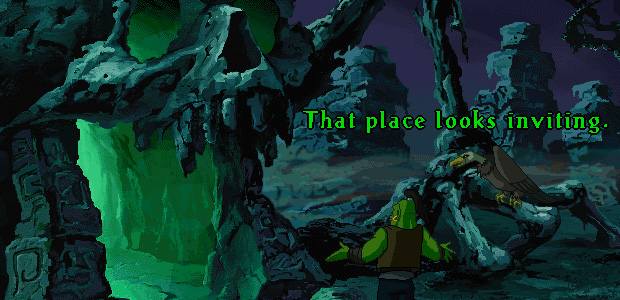
But, sadly, like most of these things it’s unlikely that Blizzard could leave Lord of the Clans in the wild in this form even if it wanted to – we should probably be grateful that the YouTube videos are still up, though even typing that, I can’t help but feel I might be dooming them to the doomiest of dooms. It’s a sliver of both their history, and the histories of both World of Warcraft as a place and one of the biggest games in the world, a chance to see how Blizzard approached a game so far out of their comfort zone and how it played into the development of their storytelling, and for Animation Magic, proof that they could actually draw. For all that and more, it’d be good to see as blind an eye as legally possible turned to its existence, rather than a seek and destroy mission to try and prevent any hint that the company might have been responsible for anything terrible. Except the current state of Hearthstone’s Priest class, obviously.
Anyway. That was the 90s. This is now.
Don’t suppose anyone’s still hanging onto a copy of Starcraft: Ghost by any chance?















The RPG Scrollbars: MMO Jails And Virtual Porridge
Richard Cobbett on September 19th, 2016 at 1:00 pm.
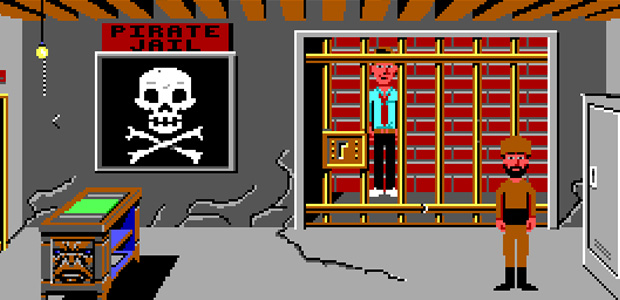
Backstage areas have always fascinated me. Behind the scenes in theatres, where all the glitz and glamour dies instantly the moment you step where the public isn’t meant to see – down lethal staircases and in filthy preparation rooms. The tunnels in places like Walt Disney World, where cast members travel to avoid ruining the magic, and tough security guards probably not wearing mouse ears emerge to haul off trouble-makers. And in games, especially online ones, there’s often parts that we’re just not meant to see, from developer tricks to places for the GM team to hang out.
Quite often, these include prisons. For the really naughty players to go.
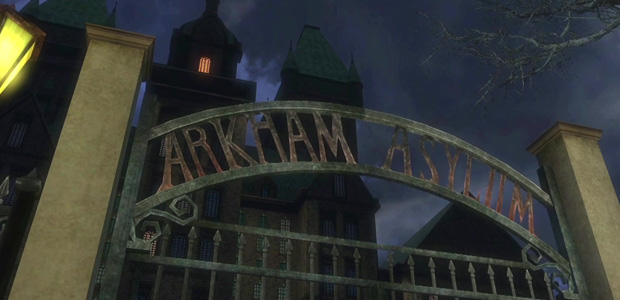
Importantly, by ‘prison’, I don’t mean a location that happens to be a prison, like, say, Arkham Asylum in DC Universe Online or the Zig in the still-mourned City of Heroes. Not somewhere to escape from or break someone out of or as a punishment for in-game transgressions like stealing a loaf of bread. No. I’m talking about the kind where you as the player are taken for a time-out and possibly a whack with the ban-stick depending on the mood of the GM. These have always stood out most because they don’t really need to be designed areas at all – yet even so, it amused someone to go that little extra distance for something that literally nobody was intended to see.
Being a good player, I’ve never seen any of these in the flesh. I’m going purely by looking up forums and YouTube videos and the like, so it’s possible that some of these no longer exist or aren’t in use. The closest I’ve seen are bad-behaviour monitors in single-player games, like one of my favourite moments in Ultima Underworld 2. The plot has you trapped in Castle Britannia surrounded by NPCs, and of course you can beat them up. Rather than just killing you though, you get thrown into the only jail in Britannia without a convenient lever to pull and escape with, with Lord British telling you that he’s just going to leave you there until the end of the crisis. Which he does. (And does he then send down other heroes into the sewers to save the day, like Iolo and Dupre? Hahaha, no. But frankly if you’re expecting Lord British to do anythinguseful, you’re no true Ultima fan.)
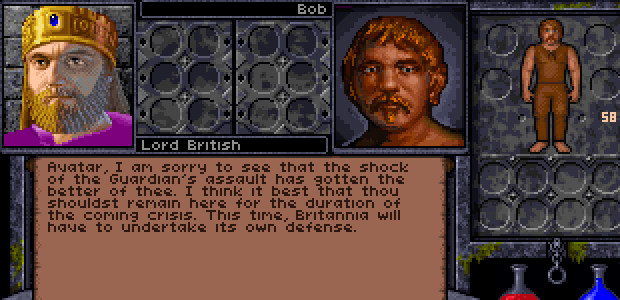
The surprising thing is that while the ‘prison’ gimmick is fairly well-used, most games have tried a slightly different spin on it. The first famous one that I remember getting a wide audience outside its own game was the Second Life Cornfield- wait, one sec.
Second Life: The Cornfield

There, that’s better. The Cornfield is a strange example because it ended up becoming more famous than most of the game’s actual content. Based on the Twilight Zone episode It’s A Good Life, it was what it sounds like… more or less… a giant cornfield in perpetual night, cut off from the rest of the world. Transgressors who had been suspended could entertain themselves during their sentence by riding an incredibly slow tractor or watching a ‘boring’ black and white movie on a TV. Occasionally, Linden Labs employees would supposedly drop by to look in on the prisoners and leave without saying anything. Once the sentence was over, the condemned were returned to the real Second Life server, no doubt to find a hundred brand new porn stores.
The amount of attention the Cornfield got though made it one of Second Life’s more celebrated locations, with players creating simulations of the place for others to go visit without violating the rules. Then, back in 2014, Second Life needed a location to demonstrate a new feature called Experience Keys… and to show it off, created a shooter version of it where players hunt ‘griefers’ for cash. Weird.
World of Warcraft: The White Room
World of Warcraft has historically had many secret islands tucked off the map, supposedly inaccessible by players. GM Island, where the GMs characters stand while their actual owners use other tools to communicate. Programmer Isle and Designer Island, for obvious use. Occasionally players managed to reach them in the game proper, though it was obviously easier on player-run shards with cheat codes.
Below GM Island is the White Room, which feels like about the most ‘Disney’ punishment zone on this list. It’s literally a white room that metaphorically screams ‘you are no longer in the game and we are not playing’, with a spotlight focused on a chair. Those summoned by GMs are glued to the chair for questions and/or bollockings, unable to leave or communicate with the outside world. Still, could be worse. The penalty could be having nobody to talk to except the folks in Barrens Chat…
Everquest II: Drunder
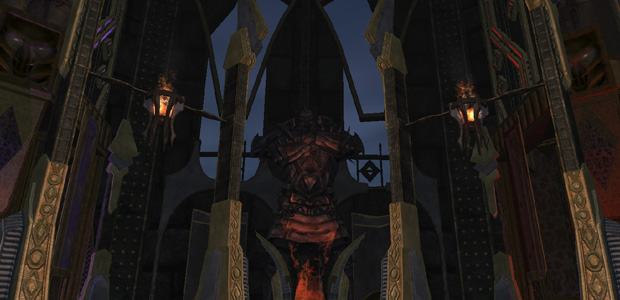
A mere jail cell? Please. Sony/Daylight decided to go one better with Drunder, a whole prison dimension. Be caught cheating, being abusive, otherwise break the rules, and your entire account of characters gets a one-way trip to Drunder to play amongst only other disruptive influences, cheaters and scumbags. No customer support. No way back. It’s possible to request banishment to Drunder, but the same rules apply. And the result? Around a year ago, Leif Johnson did a report for Vice saying that while it was a server for assholes, in practice, the ease of signing up for a new account and the number of people banned for the likes of botting made it surprisingly quiet. Has it changed? I’d be interested to know. At any rate, it’s an intriguing experiment, especially alongside the likes of Rust and its players’ focus on building civilisation out of anarchy.
Maple Story 2
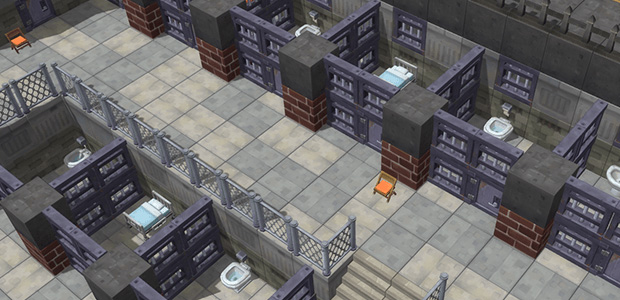
One big difference between Maple Story 2’s player jail and others is that it’s one of the few where other players can show up and see their incarcerated playmates stuck on the business end of a game of Prison Architect. Such unpleasant surroundings. When you arrive, are you given a choice between a toilet or a bed? That’s potentially inhumane! At least it could offer the facilities from…
ArcheAge – Nuian / Haranian Prison
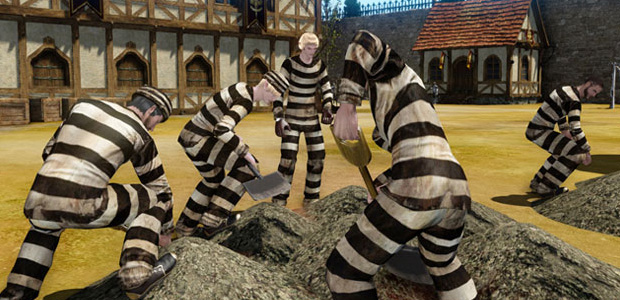
While I gather it wasn’t super effective, ArcheAge wanted to make justice more of a community handled thing. This doesn’t include the likes of botting or outright cheating, just stealing crops or player-killing. The gist is that crimes leave behind evidence that other characters can report, leading to a trial run by other players, and a mandatory sentence within one of the two prisons. Weirdly though, it’s possible to escape if you have a few items like spoons to dig out. Otherwise, you’re stuck killing rats and playing soccer until the timer expires, and the timer only progresses while you’re logged in. I do quite like the idea of forcing players to serve their sentence though, especially if we can make illiterate waffle into a crime punished by a few hours with Kingdom of Loathing’sGhost of the English Language. That’d help clean the chat channels a bit…
Conquer Online – Bot Jail
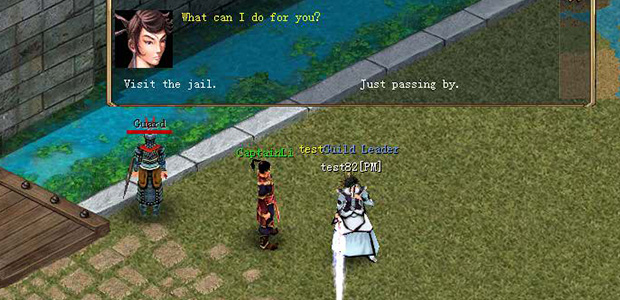
So, here’s an interesting one. The jail part isn’t all that exciting – essentially, there’s two of them. One takes in extreme PKers who finally fall in battle. The other is reserved for those who cheat and bot their way to glory. In PK Jail, you have to buy your way out using Silver, which you can mine without fear of losing. In Bot Jail however, you have to pay ‘CP’ – the premium currency – and literally buy your way to freedom. No other characters are allowed to show up to help. You can’t trade anything. The fee goes from 2000 for a first offence to 10,000 for a third, with any further infractions being an instant ban. And how much is 2000CP in real money? About $30. 10,000CP? That’ll be a little over $100. Not an impossible amount to pay – but still, ouch.
Guild Wars 2 – Rata Sum
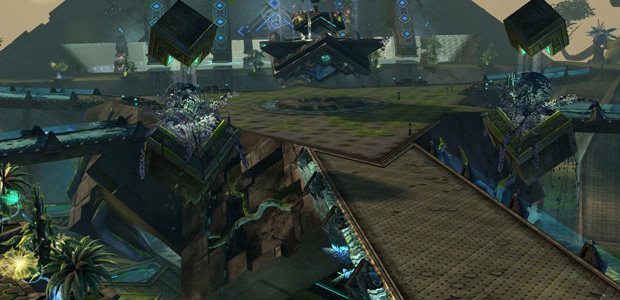
And finally, something a little different again. Rata Sum is the home city of the Asura, a race of genius gnome creatures with no regard for safety and therefore even less for safety railings. Their city is a huge cube stretching out into the sky. It’s not that hard to fall off the sides, and come to a squishy death. With care and the right equipment though, it’s possible to survive the fall and end up in an uncharted underworld beneath the city that you’re not actually meant to be able to drop down and visit.
Now, traditionally developers look down on this. If you’re the first to find an exploit, you’ll hopefully be let off if you can get away with saying that you just stumbled across it. After that though, suspensions and bans are quite common until the hole can be fixed – either sealing up a hole in the geometry or adding a death field or something like that. In Guild Wars 2’s case, explorers underneath Rata Sum promptly found themselves taken to jail… specifically, Rata Sum’s own peacekeeping cells. Later updates made it even easier to be zapped there. However, unlike most jail-worthy acts, Arenanet isn’t actually that serious. Sure, other players can come and stare at you… but you can beam out whenever you like using the standard Waypoint teleportation system, and there’s even a Trophy for having served some time in a cell.
When they are serious? You’ll know. You’ll know…
And there are of course many other MMO jails in other games, though most of the others I could find were just fairly stock rooms, like Lord of the Rings Online, or not that interesting. Final Fantasy XIV has a particularly disappointing one for a game. At least pipe in the Chocobo theme until the player goes insane! And then of course, there’s the Ultima Online one. Again, no obvious lever to pull to let you out, and no sense of ceremony. At least there could have been a stern lecture from LB himself…
That’s how you handle cheaters and malefactors.
Before banning them, obviously.















The RPG Scrollbars: Avoiding Adventures In Sorcery!
Richard Cobbett on September 26th, 2016 at 1:00 pm.
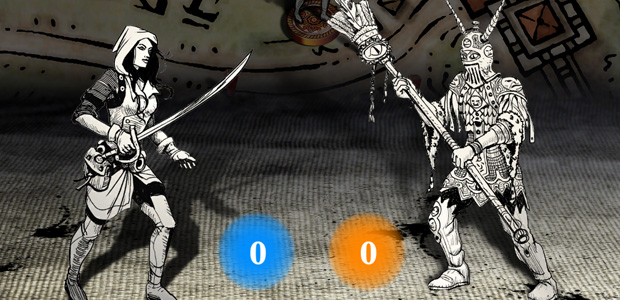
Last week saw the release of Sorcery 4 [official site], the final part of what’s technically Inkle Studios’ conversion of the hit-80s books, but in practice is easily the most crazily advanced, ambitious CYOA ever put to page or screen. I won’t go into too much detail here, because you can read John’s WIT of the series as a whole, or maybe my own interview with the devs from the start of the year. Suffice it to say that it’s been one hell of a ride, and I for one can’t wait to see Inkle’s next game – hopefully, like the masterful 80 Days, something else that breaks the mould harder and faster than Smash Mouthfleeing the Mystery Men in favour of the big green Shrek dollar.
But something I’ve been wondering about for a while. With all these choices… what if your choice is not to play? To refuse the adventure. Onwards! Reluctantly!
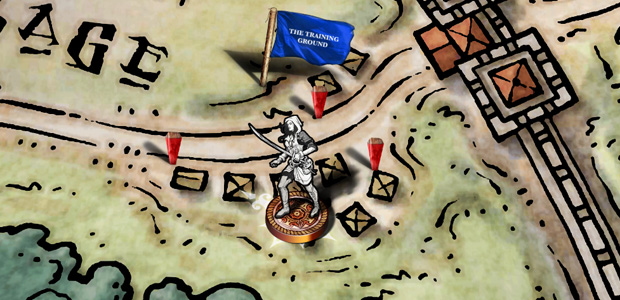
Now, obviously you can just sit in the village at the start of the game, but that’s not what I mean. Sorcery offers a very non-linear path through its game, and most of the time you want to embrace that – to uncover secrets, to find lost loot, etc, on your quest to reach the dreaded citadel of Manpang and retrieve the Crown of Kings from the evil Archmage. A hero would embrace all of these things. I however am roleplaying as a regular Jane handed this ridiculous quest against their will, and really not looking forward to a single minute of it. As most of us would likely answer the Call.
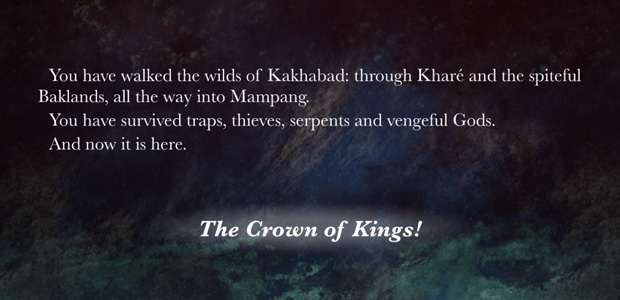
Huh. That was surprisingly easy!
No, wait, wait. Dream sequence. Actually, I’m still in my village at the edge of the Shamutanti Hills, with four long maps to traverse. I dress, breakfast on bread and goat’s milk, and collect the pack and sword from beside my bed. I pray for luck… I think I’ll need it… and head out into the village, where all are aware of my mission. I greet them. The Sergeant of the Sightmaster Warriors gives me twenty four gold pieces. “All we can spare”, the tight-arses. Do you want the Crown of Kings back or don’t you?
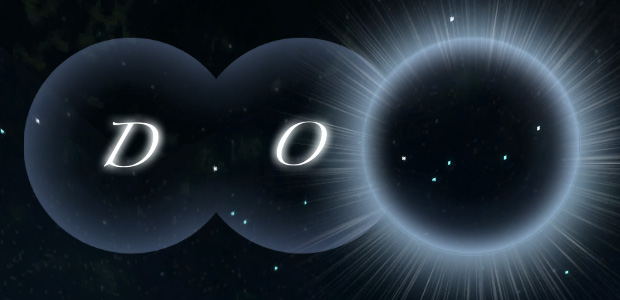
Given the option to take it, take half, or refuse it, I of course pocket the lot. Next, spellbook. I make a point of screenshotting this, purely because the last time I complained about the spellbook system being ridiculous and it being much better if the game would just let you pick one from the damn list like a sensible game, I had many a pedant going ‘Oh, but you don’t GET the spellbook so it makes sense that it works like this, you non-RTFMing fool…’ Well, you do. Moral of the day, I was, am and always will be right about this game’s spellcasting system being complete garbage.
See? here is the Mage pressing the book into my goddamn hands.
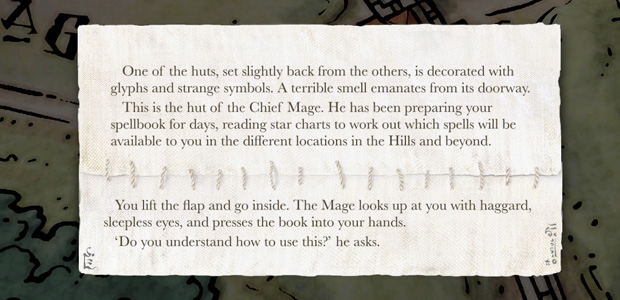
Apologies accepted at your earliest convenience. Now, where was I? Oh, yes, being smug. Well, I’m sure that’ll soon fade as the journey goes. First up, rations. Rations in Sorcery restore your Stamina, Stamina is Health. Rations are important. I buy six – the most I can – and get a two gold discount. A bit of training later and it’s time to head out into the hills proper, to seek adventure and Rincewind the hell out of it.
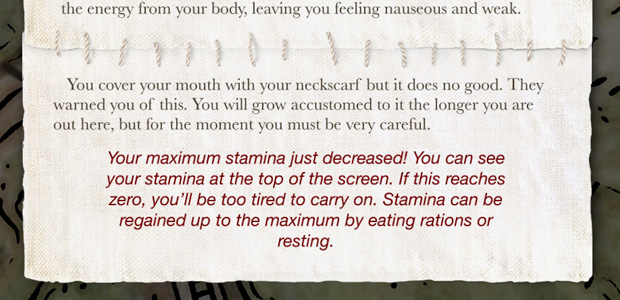
Goddamnit! Barely an hour outside and I just lost half my health to the environment. Well, never mind. I head off cross-country, stopping off to buy some equipment from the first shop – an axe, a flute, and a bag of teeth for use in spellcasting. Admittedly, the axe isn’t quite the kind of thing I want to waste time fighting with, but I might possibly know from previous playthroughs that it has its uses. Likewise, the flute seems pretty pointless, until leaving the town and using it to cast the JIG spell – which causes lively dancing in enemies, humiliating them and leaving them wide open.
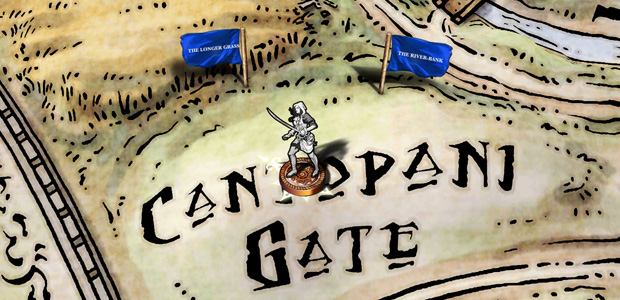
At this point, the map opens up. Time to start running. There’s a village not far away, which probably means the safer path. Unfortunately to get to it means a bridge, and this part of Sorcery follows the ‘fuck you’ school of design where falling into the water means almost certainly losing all rations as well as dignity. In fact, this is what inspired this run – knowing that around here it’s possible to die because you sat down for lunch, only to take a shot in the leg from an unseen enemy and promptly keel over and turn into a gravestone. Luckily, unlike the books of old, you don’t need to stick your finger between pages to casually rewind time. Rewinding is built in and approved of.
But even so, sometimes…
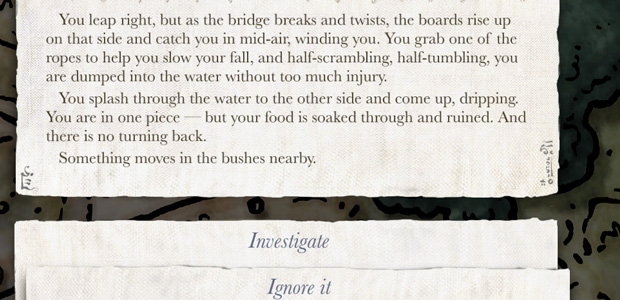
Seriously, fuck you Steve Jackson. And fuck the 80s too. With their hair.
With no way around the traps, I reluctantly take the lesser of the various evils, which is to step back from the second trap and so fall back into the first. This results in being captured and tied up by Headhunters. Gah! What happened to not having an adventure? I bide my time, and… wow, those… those graphics. This really is an 80s game.
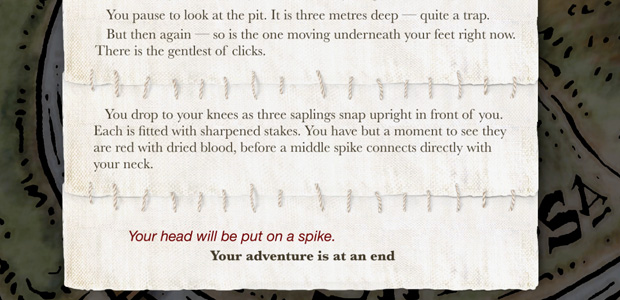
Luckily, being thrown in one of those impossible to actually make pots isn’t the end. I pray to my spirit deity. It makes it rain. The Headhunters drop me on the ground. Somehow… uh… landing on wet mud loosens my bonds. And I’m out of there, with posessions intact! I flee and promptly end up a target for some annoying little elves in the trees, but that’s a better fate than being eaten alive. I let them do their worst and make it to the village of Kristatanti. Unfortunately, despite being dirt poor, the inn-keeper seems to think her guest-house is worth three gold pieces. Haha, no. What’s the worst that could happen to you, sleeping outdoors? Waking up to find a Roach Pig has sunk its teeth into your leg and is sucking on your blood?
Unrelated, I later wake to find a Roach Pig has sunk its teeth in my leg.
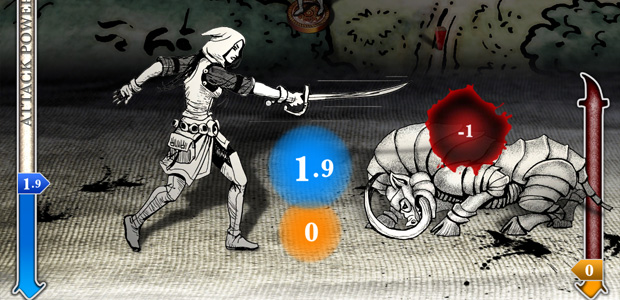
And let that be the last combat for a while. From there, I take a lift with a cart driver that proves be, ooh, almost five centimeters of the map, and actively avoid both ruins and caves. Please. Like anything good ever came of poking around caves. I skip another village just in case it’s a trap and then- no! Werewolf! Werewolf attack!
Fortunately, I wait it out and it, uh, gets bored and goes away.
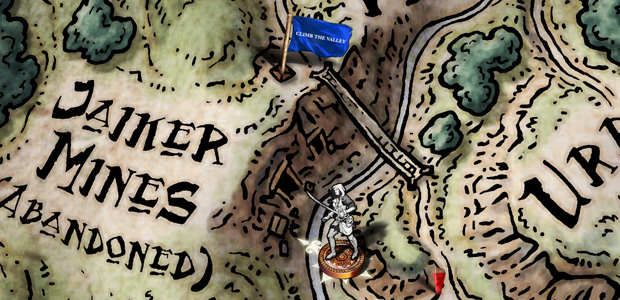
That just leaves a suspicious looking bridge that is quite obviously going to be a Monty Python Bridge of Death reference, which I avoid for obvious reasons. Much easier just to climb down the side and climb up, and be spared any stupid questions about swallows. From there, the final town in Part 1 awaits – Birritanti. For once, I don’t avoid it, but head right in. This is because I have… uh… a sacred vision that somewhere within is the owner of the axe that I bought at the start of the game. His name is Glandragor, and he provides some help for the rest of the trip to the city of Kharé, as well as warning that the peoples of the next village will be looking for an adventurer due to their chief’s daughter being kidnapped by marauders.
“It’s not my trouble,” I tell him.
“It’s not, but you have the adventurer look about you. I think you won’t be able to resist.”
Ha. We’ll see about that, friend. But first, some sleeping and skinny-dipping…
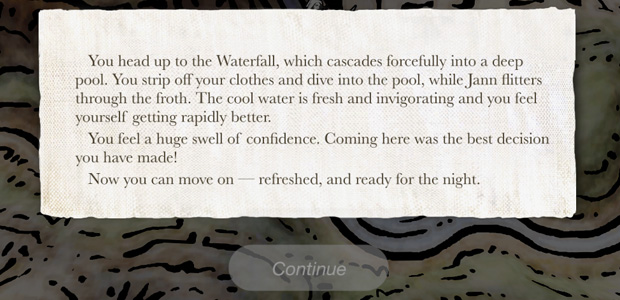
…and fighting an assassin. Huh. But at least while well rested!
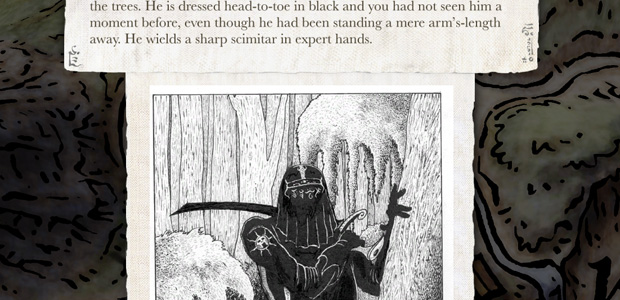
This is of course Flanker, whose honour is such that defeating but sparing him guarantees a favour, but who still likes randomly attacking people with a scimitar. Like most assassins codes of honour, it’s probably better not looked into very deeply. Annoying, because fighting him costs me much of my precious Stamina.
I also have an odd meeting with a witch who overthinks things too much.
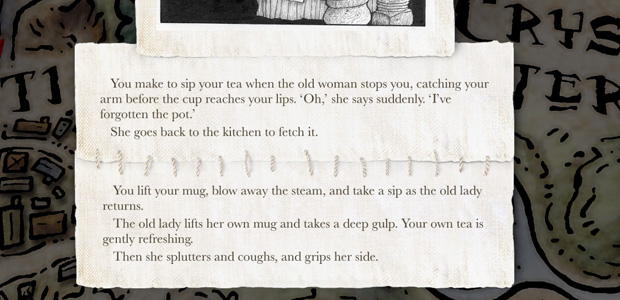
I don’t know what her problem is. Lovely cup of tea! Was she expecting me to swap cups on her or something? That would be incredibly rude and suspicious! Almost as rude and suspicious as it would be to use a poison you wouldn’t see coming…
Anyway, the final part of the quest is to rescue the Chieftain’s daughter from its last village. I promise to do it, follow them to a hole in the ground, and then bravely, bravely, bravely leg it. It doesn’t work, sadly, the plan not helped by the fact that I’ve acquired an annoying little partner called Jann who cancels out my magical abilities, but at least I tried! Almost as hard as I tried to murder Jann and even now curse his name.
More 80s gamebook bullshit of course follows, including rolling rocks and snake pits. Jann serves up the biggest plate of the aforementioned poo pie though, by not just making everything harder, but completely undercutting about 80% of the things I could theoretically do to solve problems. I dub him the most annoying creature in the universe and pray to my Spirit Guide that he be imminently sodomised by an angry wolf. This is especially pointed when I finally reach the effective boss of the chapter, a Manticore who is a complete breeze to take out with the help of a couple of spells, but a brutal fight for someone armed with starting gear and a winning smile.
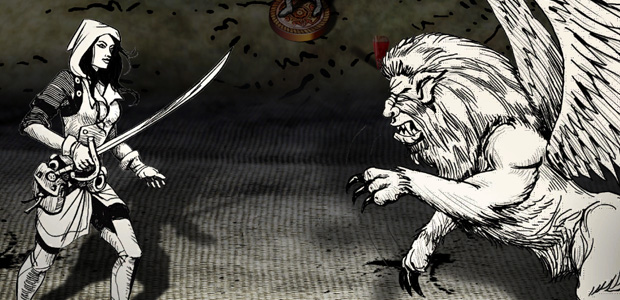
And I’m very soon all out of smiles. This is far too much like an adventure. I disapprove.
Uh. Good kitty? Nice kitty?
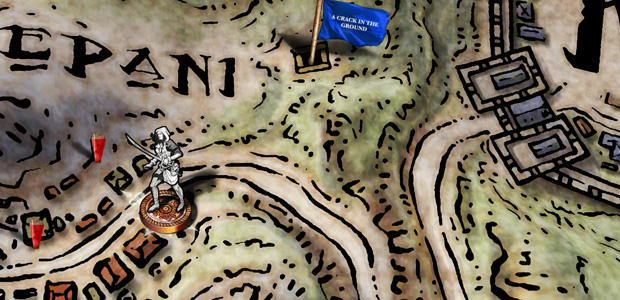
Fortunately, via judicious reloading, I’m soon done. Ignoring the victory celebrations, I tumble into Kharé battered, bruised, and annoyed. This, I know from experience, isn’t going to get much better in a hurry. Kharé is the City of Trolls. Not giant rock monsters with clubs. I mean that its city flag is a farting anus against a cross-pattern of LOLCats, and its national anthem is Ten Hours of the Trololololo Song.
Also, it turns out that if you don’t do things like adventuring, you quickly run out of things like money and stamina, especially after being forced to fight with a giant manticore. It’s time for serious, serious cheesing. Also, while I’m at it, asking why I have to go through this ghastly place when there absolutely has to be some bridge or something further down the river that would be safer. Hell, let’s swim the damn thing. It hardly matters! That’s how you get across it when you get to the bloody docks anyway!
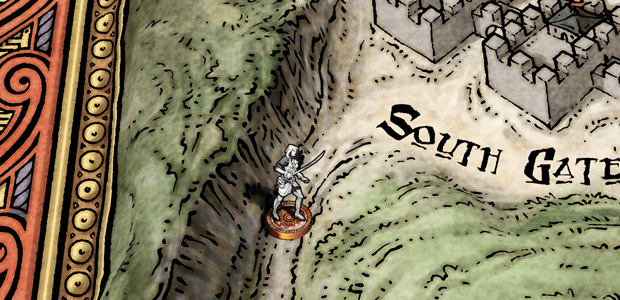
Anyway. The good thing about Kharé is its gimmick. Basically, you’re not meant to get everything you need in a single run, with a time-loop system being introduced later in the episode so that you can go back and get the essentials – the essentials, supposedly, being the codes that you need to open the Gate to the Baklands, and Sorcery episode 3, as well as some top tips from much more powerful Sorcerers.
First though, beating up a beggar for the hell of it.
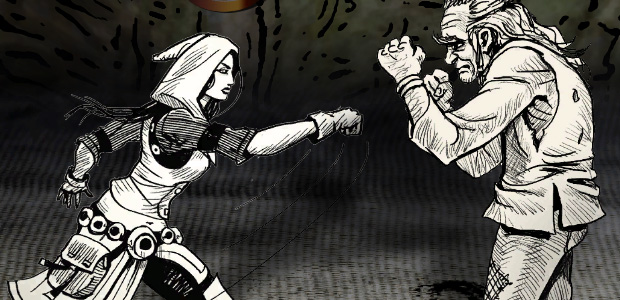
Oh, I know. But it’s only fair. Basically, everyone in Kharé wants you dead. If you ask someone to be a guide, they’ll find a way to set a golem on you or drop you into the sewers. If you go to someone for help, they’re as likely to smite you with magic as help out. It’s an impossible economy of absolute beeep beep beeeep beeeeeping beep-beep beep-weasel beeeeeep!s that’s only tolerable because you can rewind time on a whim.
But knowing that is important. And knowing is half the battle.
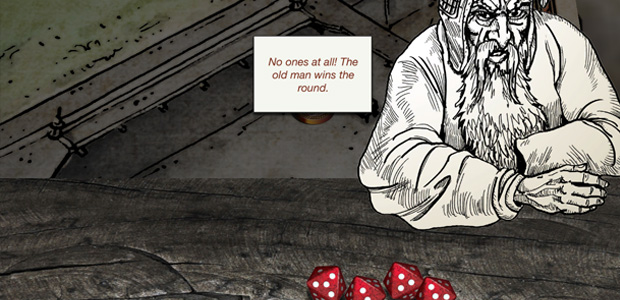
Not that it keeps you out of jail. Some crooks learn the real art of crime while banged up. I just learn how to play bloody Swindlestones. Swindlestones is basically Strip Liar’s Dice with more talking to old men about lore and thankfully less stripping on any side of the table. Its a perfectly fine mini-game though, and one I can definitely play without fearing too much of a shift towards adventuring. In fact, having a nice evening’s rest in a prison is a refreshing start to exploring Kharé, spoiled only by the fact that I now have… no gold, and no rations. And of course, the prison doesn’t put on a nice Continental breakfast or anything. Not even a bowl of gruel to get the day off well.
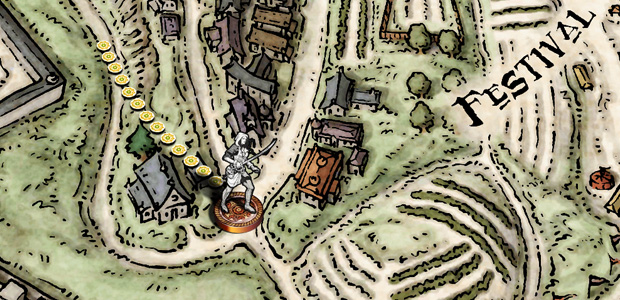
Skipping through most of Kharé proves surprisingly easy. Lots of people try to get my attention, and more or less I go ‘LA LA LA LA LA!’ and run out without listening. If they’re a guard, I pretend not to notice. If they’re apparently a corpse, I cross the road to avoid them. If they’re a friendly face, I scream, and commence Operation: Leg It. Oh, this might sound like overkill, but in Kharé, I know from a previous trip that it is in factexactly enough kill. Just about every decision point offers the words ‘Keep Moving’.
‘Keep Moving’ becomes my mantra, through the market, down the main road, all the way from the nice bit of town to… literally everywhere else in town. Everywhere. Kharé is a place where if you stop for a drink, you’ll drink it, then the friendly guy who was giving you advice a second ago will suddenly cheer “Vangorn the Murderer has claimed another victim!” and watch you die of poison. Fuck Kharé.
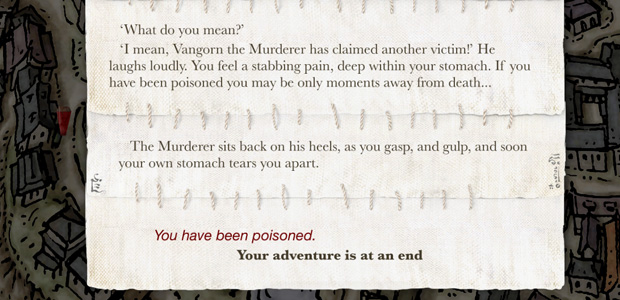
By the end of the day, I’ve reached the river and proven that you can indeed swim across it, making this whole adventure somewhat pointless. However, be that as it may, the only route is through the other side of town, past its muggers and underground monster hives, and the Necropolis, which doesn’t sound intimidating at all!
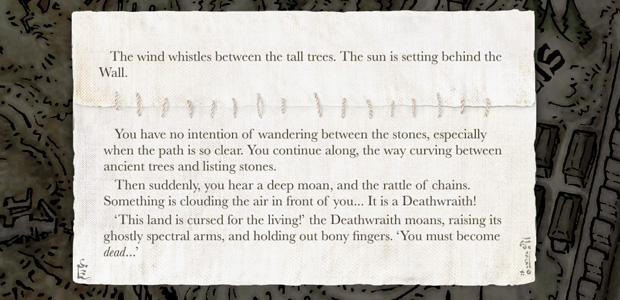
Nope! Nope! Nope!
And so, with pleasant swiftness, I find myself at the North Gate out of town. So, that went well. Also, I get mugged by werewolves who take all my money. That… didn’t go so well. No food, none of the tiny amount of money I’d picked up on the way, and still two chapters to go! Somehow I doubt the Archmage is too impressed.
But it’s worth it for what happens next, which I’ve been looking forward to ever since the start of the chapter. Opening the Gate, I’m met by a booming voice who demands to know if I’ve learned the spell that controls the gate, and the answer is of course “Haha, no.” That’s adventure talk, bucko. And you might think that this would be a problem. Ordinarily, it would be. The gate would remain locked. But today, I’ve lucked into being here right on the edge of a full-on goblin invasion. Hundreds of them! Pouring into the city! And though I can’t force the gate, their army effortlessly barges through. And-
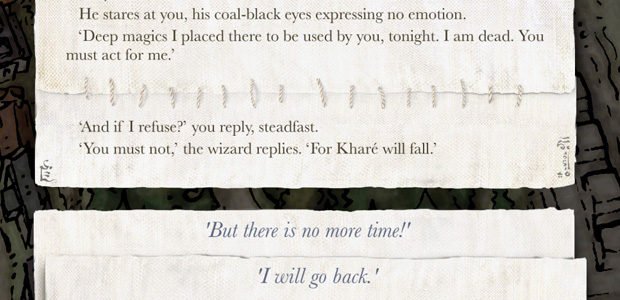
Sigh.
And then a mysterious voice from the past, Lorag, appears to tell me that my quest all along wasn’t to get through Kharé, but to save it. To somehow prevent its destruction at the hands of goblins and werewolves and goodness knows what else that lurks in the alleys and corridors. And for some reason, he acts like this is a sensible thing for a sane person to do. Hell, if I was an adventurer, this would be an unappealing prospect. As a lazy travelling hobo who still unaccountably has a quest, it’s verging on complete idiocy. At the very least you could have stepped in to prevent me getting mugged.
I mean… save Kharé? Really? I would rather eat Johnny Vegas’ underpants. If I had the option “Leave, dancing,” then I would choose it. Too bad Lorag doesn’t see things my way. At all. “If my city burns today, because of you, then your journey will continue,” he warns, “But it will be under a dark cloud. I will curse every further step you take.”
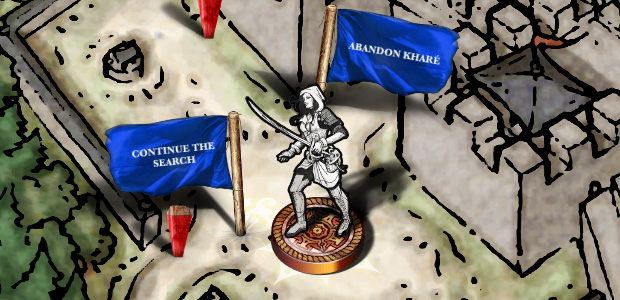
Tough decision.
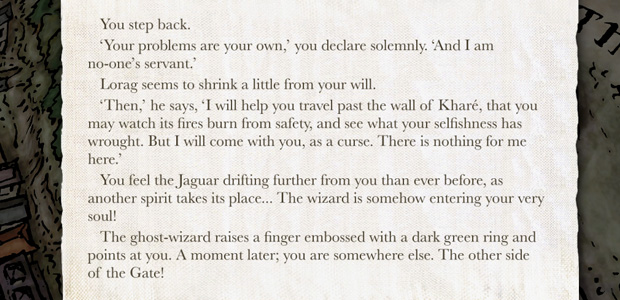
I’m sure he’ll get over it.
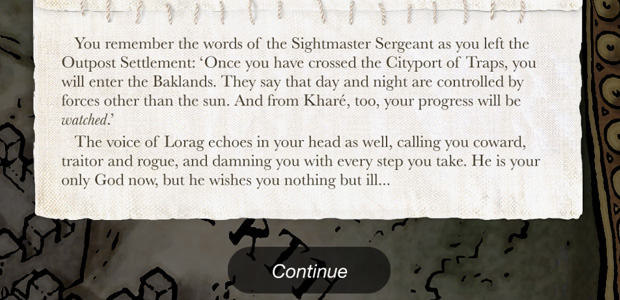
…eventually. Anyhoo, to Chapter 3! Just check out these stats…
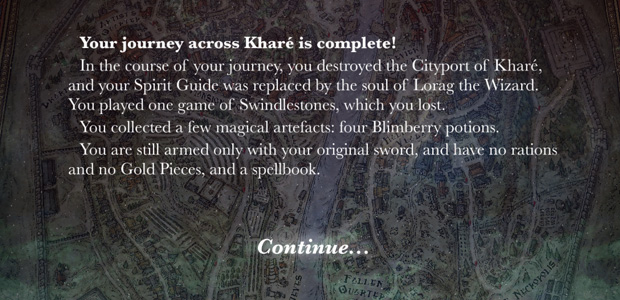
Sadly, as of the third game… well, things quickly went downhill. Your goal is to track down the Seven Serpents who serve the evil Archmage, and there’s not much scope for doing that while keeping your nose clean. At least until you meet them, and they eat your face off. “That’s right,” sneers Lorag, “Prepare yourself for your doom.”
Sigh.
Sorcery 3 is the open-world game of the series, and easily my favourite. But that’s when you want to do stuff like control time with the help of magical lighthouses, and collect loot, and go after the Serpents. Just blitzing through is less fun, though having Lorag on hand being a bitchy presence who can’t help but show off his knowledge adds a definite spice to things. Also, despite the whole thing about ‘cursing your every step’, he’s actually okay about taking pity on me and providing the occasional heal. Basically, I think we’ll be besties, just as soon as he realises how much Kharé sucked.
I’m basically the king of priorities.

But in this chapter, the lack of preparation really bites down. The enemies are tougher. Life doesn’t last long. The blocking enemies are everywhere (with many items and encounters randomised rather than in specific positions, as before. Even so, a little knowledge goes a long way. Learning the Serpent’s weaknesses makes them relatively easy to take out. I have to burn my spellbook to take out the first without dying, which sucks… or would do if I couldn’t just Google a list of the spells.
Still. Fighting one of the unstoppable serpents? That’s a bit… adventurous, isn’t it? Very poor show. While this part of the adventure is very exploratory, I make a note to continue half-assing it as much as humanly possible and leave still using my original sword, with no rations, only three gold pieces, and only two of the Seven Serpents killed. I’m pretty sure this is about as non-adventurous as you can get and still make it across the otherwise guarded encounters. That said, the first time I played this game, I know I didn’t kill one of them, and I’m pretty sure there’s a way past the second. I really did hope to get through the chapter without a single accomplishment.
In my success, I find such bitter failure…
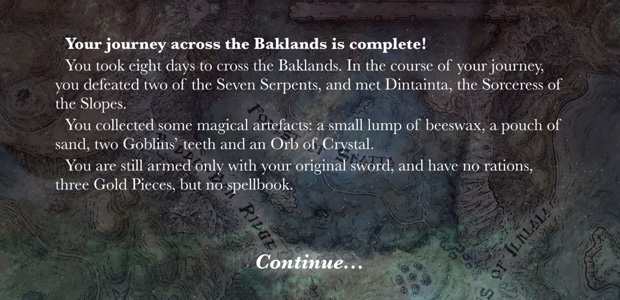
At the very least, I impress Lorag, who finally gives up his cursing and spluttering to accept that just maybe… maybe… I had a reason to let Kharé burn.
“Indeed,” I tell him. “I despised your city.”
I suspect we may never be friends again.
Also, somehow I think I managed to become the baddie. Something about misusing the power of time-travel, somehow destroying several villages, turning the Baklands into a poisoned wasteland… yadda yadda. Well, you can’t make an omelette, and all that. Not that I’d try, if there was any way I could just run away from the eggs and the frying pan like a sensible non-adventurer.

Now, I’m not going to go into how things went in Part 4, for the simple reason that it’s only just out, and definitely not because when I went to get my screenshots, they were all blank. Grr. (Spoiler though: It… could have gone better. Turns out that showing up at your nemesis’ house with a broken sword, little stamina, no rations, no resources, and five of his toughest goons wanting to kill you should typically be saved for Plan B.
But as an experiment, I think this non-adventure adventure did its work – of showing the power of Sorcery’s storylet form to tell a sprawling RPG that actually responds and weaves in and out of your decisions. Honestly, I didn’t think it would be possible to get this far while completely ignoring everything, even with a little advance knowledge about the terrain. You can argue that being able to do it means that Sorcery is too easy, but really, even willfully refusing to have an adventure turned out to be a surprisingly fun adventure. Playing it properly, with four games worth of choices running into each other and rippling against each other is of course even better.
And that’s largely why this is one of my favourite RPGs of recent years, despite it having as much conventional adventure DNA in its system. The first chapter is a touch frustrating with its ‘haha, you die now’ traps everywhere, but after that it really finds its feet as a game that tells a story along with you rather than trying to fight against you. The Seven Serpents in particular offers not just the inspired dragon-Hitman approach of giving you the targets, but encourages you to get the job quickly lest the evil Archmage cotton onto your presence. Completely skipping the adventure in Kharé added one of my favourite characters to the mix, both for Lorag’s ineffective snark during mosts of the game, and the amusing way he actually does come around.
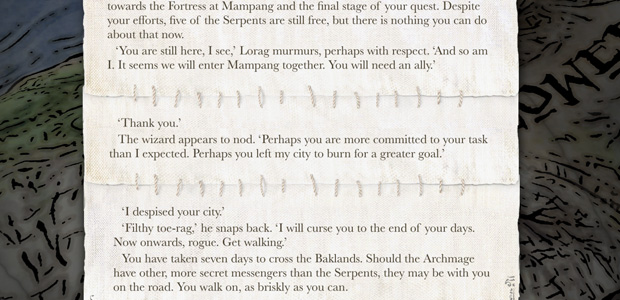
Sorry, I couldn’t bring myself to be nice to him, even for a screenshot.
There’s just so much in this series to find, to explore, and with the power of storylets, to enjoy as your story regardless of what everyone else is doing. 80 Days of course offers something similar, but in that game you’re still typically at the whim of travel schedules and the like, whereas Sorcery really does let you control almost every step of your journey. The rewinding system in particular is a masterstroke (until Part 4 turns it off, to show that now, things be getting serious), feeling less like a cheat mode than a way of exploring a situation in more depth. Was there another, possibly better way? Sure. But unlike most RPGs, it’ll be based on something you may or may not have done up to three games earlier, from sparing a character’s life to having found a crucial reagant for a spell that previously seemed to just be filling space in your spellbook. Designing on such a small scale but against such a wide canvas demands a whole new way of thinking about RPGs, but Sorcery! proves that it’s well worth taking the time to do it.
Fingers crossed that some of the big boys have been taking notes during the series.
And once again, I really can’t wait to see what Inkle does next.
Apparently, he didn't play AoD.easily the most crazily advanced, ambitious CYOA ever put to page or screen















The first time I had a press interview, I looked to see if there was a Renegade interrupt that would let me headbutt the interviewer.
There was not.
I confess to being Disappointed.








Ayup.Sorcery! it's an incredible series.
That's all.
All of you guys should play it.















And now to see how many hundreds of people care about Arcomage.
The RPG Scrollbars: A Round Of Gwent
By Richard Cobbett on October 31st, 2016 at 1:00 pm.
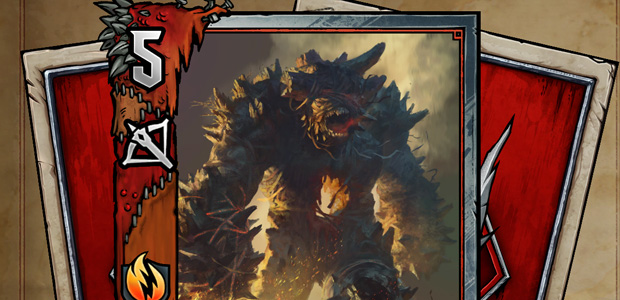
These days it seems like you’re not a true RPG unless you’ve got a card-game spin-off. Hearthstone. The Elder Scrolls Legends. Dark Souls Strip Poker. (Coming soon! And the rules are painfully simple. First, strip. Then comes the poker! Repeat! Again!)
The reason is of course entirely down to the opportunity to expand the world and find a new take on the characters, and nothing whatsoever to do with Blizzard proving that a successful attempt is a license to print money, to the point that the most ridiculous of games are giving it a try. Still, the two genres have had a longer history than you might think, from the original World of Warcraft trading card game, to Final Fantasy’s Triple Triad, to Might and Magic’s Arcomage. Much like Gwent, it began as something to kill time with in its game’s taverns before being spun off into its own thing. Unlike Gwent, nobody cared. Even in Closed Beta, I can see lots of people caring about Gwent.
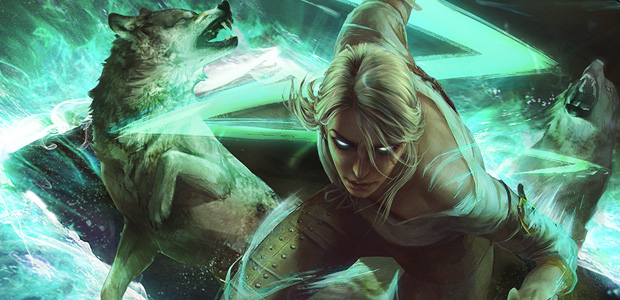
Part of the problem with reviewing The Witcher 3 was having to blaze through it, which means Gwent wasn’t really part of my experience first time through. Some 30 hours of one of the best RPGs ever didn’t leave a lot of time for gathering cards and wondering how Ciri had managed to cover her tracks so well despite being famous enough to have been immortalised as a Gwent card, or if Geralt felt a bit odd about someone else playing him in the middle of a game. Still, Gwent was huge – replacing the previous game’s tedious Dice Poker with something that made better use of the characters than the first game’s sex cards, and rules so simple that the designer supposedly came up with them in the bath. (Critics have accused it of just being a reskinned version of a game called Condottiere, but I’ve never even heard of that, never mind played it, so I can’t comment. My card game experience begins and ends with old Sierra adventures, which at least were usually polite enough to let you save/restore.)
Gwent becoming a standalone game was all but guaranteed. Still, just porting it into its own app wouldn’t be enough, not least because part of its implementation in The Witcher 3 revolved around Geralt slowly getting the best cards during his travels and so rolling the other players over by the end of the game. You’re meant to be the best, the very best, like no-one ever was. So, it’s been a while coming. The Closed Beta admits to not being there yet, with lots more cards and tweaks still to be done, but it certainly feels more like a real game than what I finally managed to play of its predecessor.
Top of the things to come list is that much as The Witcher 3 was an RPG with a card-game in it, Gwent is going to be a card-game with an adventure in it, with the writer of the Bloody Baron storyline from the main game working on proper narratives that will hopefully carry on the same Pokemon exploration vibe to spice things up, rather than just be a quick sop to story like Hearthstone’s jokey encounters and The Elder Scrolls Legends’ really dull ongoing story. Honestly, I’d totally be up for a Gwent where the single-player and multiplayer were separate entities entirely, so that the adventure could dole out cards like The Witcher 3 did, though I doubt that’ll be the case. Needless to say, at the moment you acquire them in the usual ways – buying ‘kegs’ (really?) of cards with real money or Not Gold, milling unwanted ones into Not Arcane Dust, and using that to craft the ones you want after drawing your tenth Sen’jin equivalent.
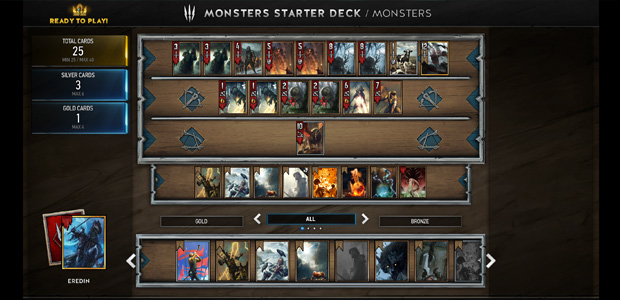
In case you’ve not played The Witcher 3 or just skipped Gwent, here’s a quick breakdown. Gwent is a card game for two players, with decks of between 25 and 40 cards. Each is aligned to a prominent faction – the Northern Realms, Scoia’tael, Skellige or Monsters, with Nilfgaard coming soon. Each faction has its own set of cards, along with a unique bonus. Monsters, for instance, keep a random unit on the board between rounds. Skellige buffs every card played at the end of a round.
The board has three rows for each side, representing melee, ranged and siege units. Unlike Hearthstone, there’s no mana requirement to play cards. All you have to do is play your cards as you see fit, boosting your ‘Strength’. Whoever has the highest Strength at the end of the round wins it. Each game is a best of three. Simple, yes?
Where things get more complex is how the cards interact with each other and the deck. Playing a Fog card for instance will reduce most Ranged unit’s strength to 1. However, it might also summon Foglets for a player with a Monster deck. Another card might add Strength to any unit that loses it, which synchronises with units that arrive on the battlefield damaged. Other units can attack cards and lower their strength. Others promote them. Another might pull things from the deck regardless of what’s in your hand. Others still pull from the graveyard, meaning that sometimes it’s worth sacrificing your own card to bring it back buff. There are even cards you play on your opponent’s side, trading giving them Strength for some other advantage later. Kambi for instance is 3 free Strength, but after 3 turns, summons a unit called Hemdall (no typo!) that obliterates all non-Gold units on the whole battlefield.
And then there’s the biggest challenge of all. Despite games being best two out of three, you don’t redraw between rounds. You get a couple of extra cards in your hand, but for the most part what you pull at the start of the game has to last you, meaning that it’s a waste of resources to try and obliterate an opponent. Indeed, Passing is a crucial tactic. The catch is that when one player Passes, the other can play as many cards as they like, forcing you to decide when it’s worth pushing for a win, or sacrificing a round to be in a better position for the next two.
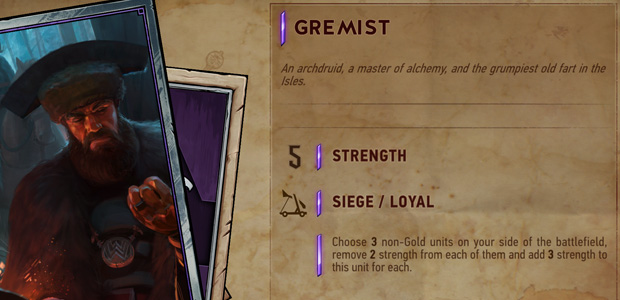
Even in Closed Beta, it works well. Games are fast, fluid, and importantly, nothing like Hearthstone. The need to think about the bigger picture adds a fantastic psychological element to the action, while the number of cards at your disposal from the start and how much they interact with both the deck and the graveyard adds a whole new dimension to that game’s focus on ramping up and card draw. It’s more like having an army than individual heroes, and determining when best to drop the hammer rather than waiting for your chance to do that.
There’s also a couple of cute features that speak to CD Projekt’s usual attention to detail, with my favourite being to send a ‘GG’ to the other player at the end of a round. This gives them a tiny resource boost – just a few flecks of gold – but is a nice way of both rewarding a good opponent and something to feel smug about withholding if they’ve been the kind of dick that just wants to run the timer out when you both know they’ve lost. The downside is that right now, there’s no quests to reward simply playing the game and make it easy for good and bad players to keep slowly building up their collections for free – if you lose, it may as well play the old Willy Wonka clip.
My only real problem with it though is the same I had with Elder Scrolls Legends – the cards themselves have very little personality. Oh, they have recognisable names and faces and audio-clips and animations if you zoom in, but very few of them do anything particularly exciting. Take 10 Strength from this. Take 2 Strength from that. Promote a unit to Gold. That kind of thing. Part of the joy of Hearthstone is seeing what crazy stuff Blizzard comes up with, especially for its recognisable characters and Legendaries. Here… well, here’s The Witcher 3’s main crew. Geralt – 12 Strength. Triss – 8 Strength, Remove 4 Strength from 1 Enemy Unit. Yennefer at least spawns one of two units that either adds or removes 2 strength to all other units on the battlefield and Ciri returns to your hand if you lose the round, but still… not very exciting. Glancing through the cards, the only one that gave me a ‘Oh, come on!’ was the Bloody Baron, not for being powerful, but for his ability being to spawn a Botchling or a Lubberkin.
I mean… damn. Talk about rubbing it in, guys.
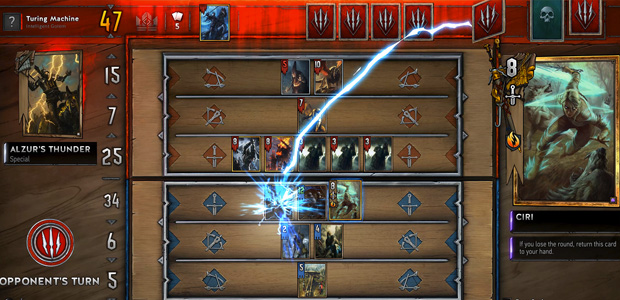
There’s still plenty of potential for interesting, tactically distinct decks of course, and decks full of intricate synergies. I just miss the raw excitement of unlocking something like Dr Boom or Deathwing or Sludge Belcher – that sense that, whatever the state of the meta, the game just changed for your deck. Long-term, this is almost certainly the best approach for the game, admittedly. As someone who will only ever, ever play casually though, I’d like more cards to eagerly aspire to and more short-term drama. Again, it’d be nice to think that the single-player mode will be separate enough from the multiplayer to allow some unbalancingly cool cards with crazy effects – a Gaunter O’Dimm who lets you make one of three wishes, each with a downside, for instance, or an Angry Sorceress who slings random spells around like Yogg Saron. Fun cards with heavy RNG factors for players that like them, while keeping things generally more balanced and sensible for multiplayer rounds. Probably won’t be the case, but hey, I’d be all for it. Whatever happens, I trust CD Projekt to do the Witcher universe proud.
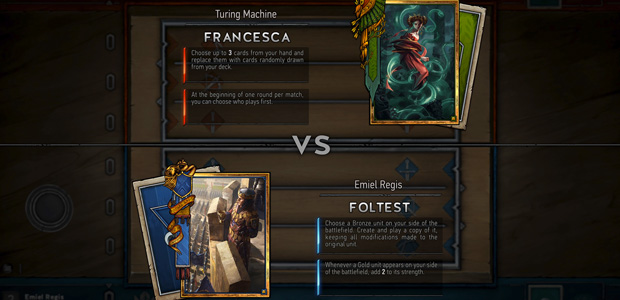
As said, this is the Closed Beta. You can sign up to request a ticket right here, though it’s unlikely to be too long before things open up. Alternatively, fire up the main game and challenge a few NPCs to a round. At this point I was going to add that if you really can’t get enough, try the Hearts of Card mod, which replaces all of that boring old swordfighting with card game battles. Sadly, the creator didn’t get too far into it before getting bored, and it looks like it’s not compatible with the current version. Perhaps the interest in Gwent will inspire someone else to pick up the pieces? The Witcher 3 may be over, but it’s still got some life in it left. More on that – fingers crossed – next week…
And now to see how many hundreds of people care about Arcomage.















got it.agris No, it's just that I only do it if I think the article is interesting enough.















The RPG Scrollbars: Size Matters
Richard Cobbett on November 7th, 2016 at 1:00 pm.
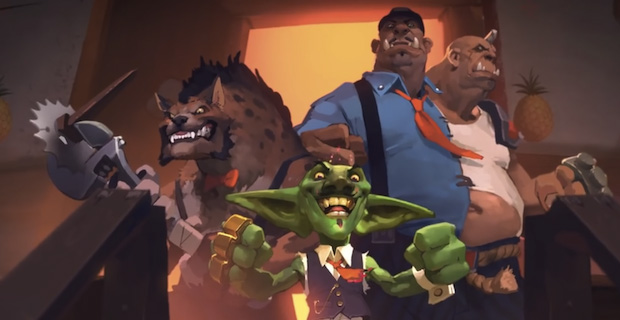
Even by Blizzard’s standards, The Mean Streets of Gadgetzan is taking the piss. In case you missed it, which I know you didn’t, but work with me here, it’s the newest Hearthstone expansion. The trailer is wonderful. The setting is a corrupt crime-town full of gangsters, hoodlums and mugs, all fighting for cash and control in a tongue-in-cheek mix of Lord of the Rings and Bugsy Malone. I’d love to play a full adventure/RPG/heck even shooter set in that world, not just play with a new set of cards using it as a theme. In just a minute of charismatic art and a fun song, Blizzard fleshed out Gadgetzan with more love and more detail than some games manage in their entire runs.
But, uh, here’s the thing. This is what Gadgetzan actually looks like.
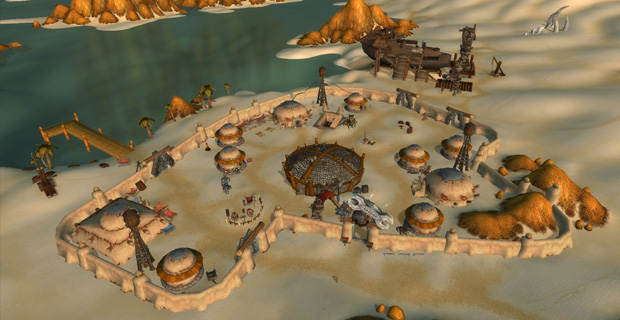
…
One second while I rewrite the trailer. Blizzard, you’re welcome.
“Ah, Gadgetzan! I vaguely remember going there.”
Gadgetzan. Where nobody makes a fuss.
Gadgetzan. Home of maybe ten huts.
Nobody goes. It’s a low level zone.
The tiny port of Gadgetzan…
Gadgetzan. Smaller than Booty Bay
Gadgetzan. Real far out of the way
At least it’s not the Barrens, it’s over in Tanaris
The port of Gadgetzan!
Everywhere you’re looking, everyone is- uh, um-
“Everyone’s in Dalaran, pal!”
Not the Mean Streets of Gadgetzaaaaaaaan.
I mean, goodness me. Scale in RPGs is always interesting, and typically done with a nod and a wink. It’s not how big something is that determines how large we’re meant to consider it, but its relative scale. The capital city of Stormwind for instance has a canonical population of 200,000, yet in terms of actual buildings would struggle to hold a few hundred. Just down the road, Goldshire is little more than a pub and a couple of houses, intended to represent around 7,000 farmers and miners and their families. Heck, Azeroth itself has been calculated as being small enough to fit on the Isle of Wight. Specific size estimates vary, but it’s not much of a planet.
That’s not a problem though, because once actually in that space, all the different biomes and encounters help fill up the space, and Blizzard pulls every trick in the book to further increase the perceived scale. Having to get onto a boat to switch continents for instance creates a sense of distance purely with a loading screen and a map. Much of the rest is then carried by the fact that we know why it has to be this way. Expected population numbers, the density of quests, the amount of time people want to spend just following a road instead of hitting things and hearing dings…
Still. Turning Gadgetzan into… that? That’s pushing it a bit.
Looking at it though, it did get me thinking about other games and how they handled it. RPGs have always been somewhat unique in how they treat size versus content. Yes, there are exceptions, but historically the big sell was that if you bought an RPG, you were buying a lot of game for your money. That was initially okay because most of them focused heavily on combat, and it’s not that hard to build out a world with a million things to fight. As story and fidelity became more important, we started to see the two sides pulling against each other, with worlds shrinking or finding/adopting different methods to represent space. Different world-scales for overworld exploration and cities for instance. Maps for the overworld, leaving deep exploration for cities. Flipping it completely, with exploration in the overworld leading to menus when actually arriving anywhere. The trend though was and remains firmly towards shrinkage.
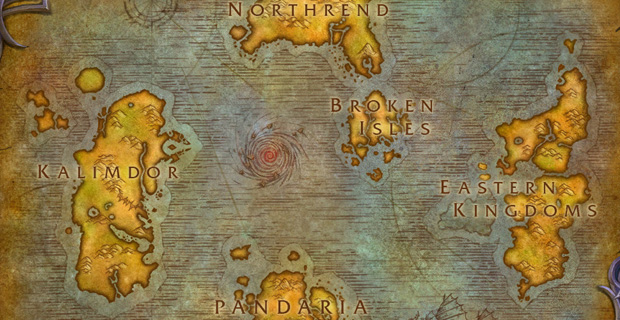
In 1991 for instance, Ultima VII (take a shot) presented Britannia as one continuous world. Later that decade, nobody blinked when Fallout and Baldur’s Gate opted for a discrete map that just highlighted the points of interest and treated the journey between them as mere detail. Now, Ultima successor Shroud of the Avatar also uses this method. And it makes sense. As theoretically cool as it is to have something like The Elder Scrolls Arena offer unlimited procedurally generated landmass, it’s rarely long before the experience loses its appeal and actually making progress wins out. Space games have their time-skips and their hyperdrives. RPGs have their magic maps and conveniently adventurer-focused cities. Those that have leaned towards the realism of scale haven’t typically done so well for it. The Elder Scrolls Arena for instance may have kicked off one of the world’s biggest franchises based on a huge world, but even by the third game everyone involved was going “Let’s just do a single island instead.”
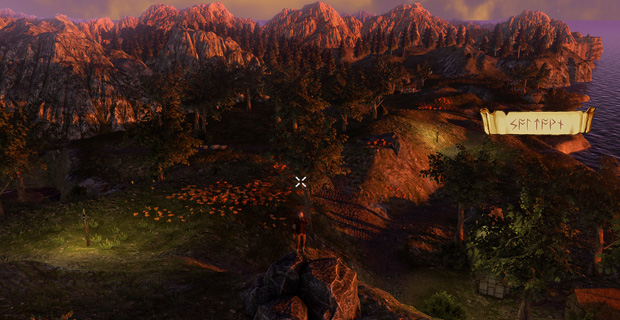
That being said, it’s interesting how a map itself can contribute to the sense of scale. I’d argue for instance that Fallout’s world always felt cramped, not because of the amount of content or even the number of grid squares it had on the map, but how compressed that map feels on the screen. Skyrim meanwhile offers a view of a world it feels impossible to fully explore. World of Warcraft’s feels epic despite ‘knowing’ how small it is, in no small part because of the different levels of zoom to dig through to get to where you want to be, up to and including alternate worlds.
The worst example ever though has to be the unofficial/not Wasteland sequel Fountain of Dreams. If anyone had played it, I’d say it was the defining example of how not to do maps. The map is tiny, and surrounded by a wall that you’d be forgiven for thinking you were meant to get past to enter the main part of the game. No, that’s all of it. There are only three locations of interest, and those are small too. Worst of all though, the purpose of the game is to find a legendary fountain capable of curing mutation. It is twenty steps from your house. I counted! And while admittedly you can’t actually find it until you know that via the main quest, I can’t think of a less satisfying outcome.
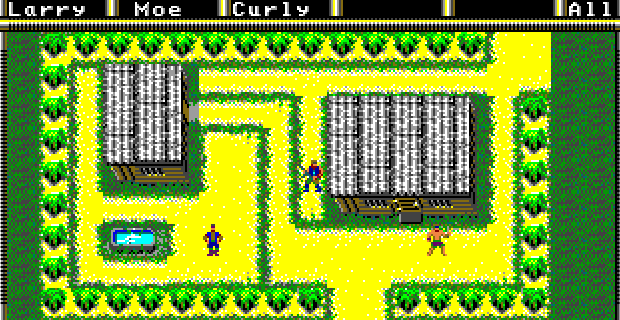
To finish off, here’s the question of the week – as you’ve probably guessed, it’s which worlds have managed to convince you with their scale, and which have blown it completely? I’ve picked a couple of examples to get started with.
On the good side, the city of Divinity’s Reach in Guild Wars 2. In general, I think GW2 does a good job with this, but Divinity’s Reach for me is what Stormwind desperately wants to be. It’s a stunning place to explore, made even more impressive by the fact that it’s not even the world’s capital – that’s the city of Lion’s Arch. Nevertheless, it’s a huge multilevelled place full of different districts, where the ceremonial artwork is as intimidating and patriotic as it could possibly be. It’s also a brilliant example of game artistry in its own right, wasting little space where it could squeeze in a few tall buildings and unreachable but still visible places for its population to be crammed into. It’s majestic, and all should bow to its majesty.
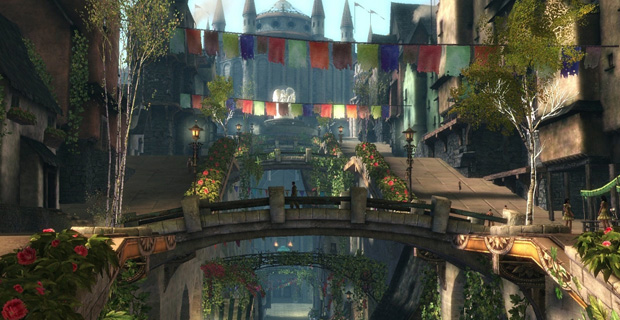
And on the flipside… wow, does anyone remember Star Trek Online at launch? It’s different now, thankfully, but I’ve never seen a game so confused. It somehow managed to make space, the final frontier, feel small and cramped, while the interiors… look, there’s reasons why MMOs tend to be built to about 1.5 scale. When you’ve got a lot of players clustered around, or fighting to get through doorways (whether there’s collision detection or not) or otherwise taking up space, you need a little extra. Still, Star Trek Online is the only game I’ve ever played that clearly expected an audience of giants…
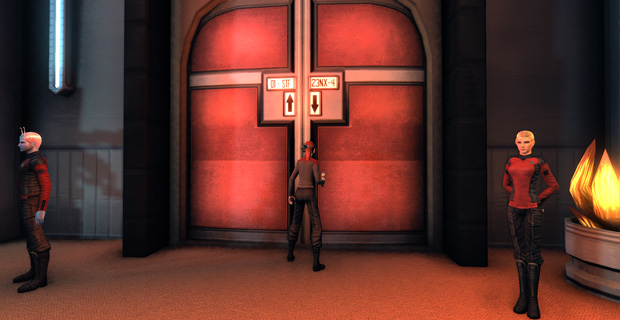
Seriously. Does Starfleet provide its captains with opera glasses?
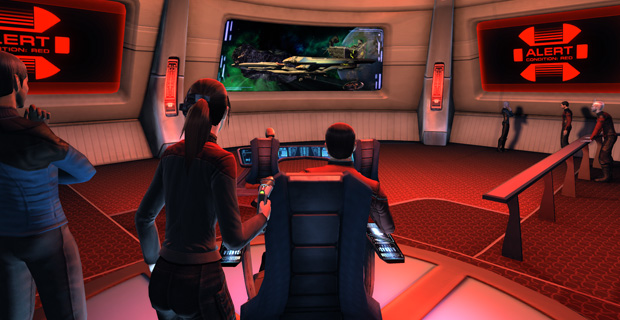
Again, thankfully those were shots from a long time ago, that I just happened to have around because I was so amused at the time. It’s fixed now, thankfully. Well, I say ‘fixed’. Perhaps someone was just assigned to clean the code, misunderstood, threw the whole game into the wash and it shrunk. Either way, result. At least the infinite majesty of space is now finally where it should be – outside the damn ship.















The RPG Scrollbars: Questing at the speed of light
Richard Cobbett on November 14th, 2016 at 1:00 pm.
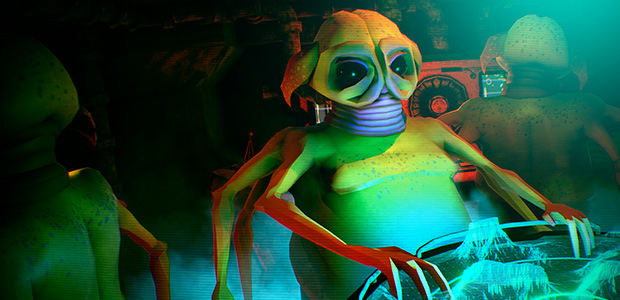
This week, something a little different. I’m going to talk about something I’m working on myself. Obviously, this brings with it certain complications. I’m won’t pretend not to be biased, though I don’t mean this to be an advert. I just thought it would be interesting to share some of what I’ve been working on as the writer and co-quest designer of Daedalic Studio West’s The Long Journey Home [official site], and to dig in to the difficulties and decisions that underpin the making of RPG quests.
Got the disclaimer? Cool. Filter accordingly as we blast off. Next week, back to other games and/or long rants about where my bloody Witcher 3 action figures are.
First, quick summary time! The Long Journey Home is a mix of space RPG and roguelike, heavily inspired by classic space games ranging from Star Control 2 to Starflight to FTL, to really obscure stuff like Psi-5 Trading Company.
Starflight and Star Control 2 are the biggest touchpoints though, and just to get the obvious question out of the way, I know that Stardock is making an official new Star Control game, but aside from having seen the couple of screenshots that came out the other month, all I know about it is that I’m really looking forward to playing it next year. Always been a fan of GalCiv and the company’s sense of humour is a great fit for the license. Fingers crossed, fans will enjoy both games, which are going to be pretty different.
Anyhoo, the basic premise. You’re in charge of Earth’s first jump capable ship, on what’s mostly a PR exercise for space agency IASA to rekindle the public’s interest in space travel. With a crew of misfit experts ranging from an archaeologist to an embedded blogger, your job is to make a quick, easy jump to Alpha Centauri and back. Shocking literally nobody, it goes horribly wrong. The crew is stranded at the far end of the galaxy, alone, injured and deeply unprepared. The only way back is through.
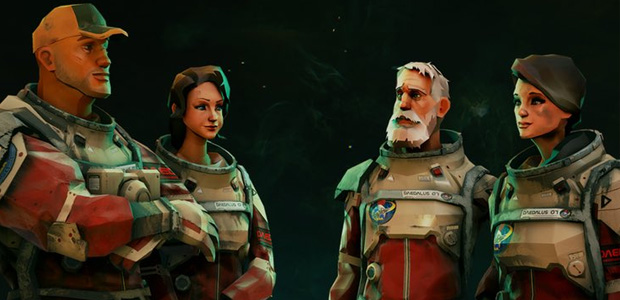
One of the interesting things about quest design is how every RPG has its own distinct flavour, based on everything from the player’s purpose to the nature of their avatar to the technology level of the world. They often have similarities, obviously, but most have at least some unique aspect that changes them up. Take quest givers. Individual person, automatic delivery, bulletin board system, hub? And then when you’ve done the quest, how do you turn it in? The classic approach is that you go back to the person who gave it to you, since in most cases that’s the most ‘realistic’ way of handling things. The Secret World however, to give one example, is a world where everyone has a phone, so it makes much more sense to report in from the field. World of Warcraft also slowly moved towards just making NPCs able to beam psychic messages to you, in one of many ‘just go along with it’ decisions over the years that stem from players typically and LOUDLY favouring efficiency over in-world consistency.
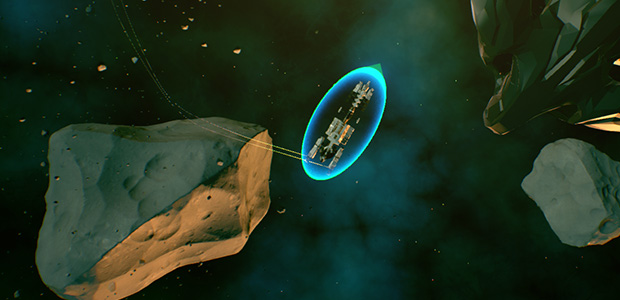
And that’s just a tiny part of questing fundamentals. What verbs does the player have access to? Verbs in this case being anything from cooling a fire with an ice spell to just clicking on a thing. What’s their status in the world, since that will determine both what’s worth their time and what people will charge them with. What bigger picture are the quests in service of? If you’re a travelling hero, it makes sense to be picking up odd jobs. If, again, you’re a member of the Illuminati charged with protecting the world from hordes of evil from behind the veil, you can’t really be caught in the river, just fishing, just as if you’re in a race against time, you’re probably not going to stop to help get someone’s cat out of a tree. If something is an MMO, how many players will be present at once, and can that be justified? Is the challenge level fitting for the level of character it’s being given, on both ends of the scale? Does your setting allow for or demand comedy/humour, or is it all being played straight? Does the engine have the power to show interesting things happening, or will all the cool stuff just be described to the player in a “Wow, that was an amazing explosion! I could see it from here!”
In short, it’s not enough to just throw everything at the wall and see what sticks. Like the old saying ‘never apply a Star Trek solution to a Babylon 5 problem’, every RPG is unique. Even if you are just killing twenty rats and gathering bear asses.
Though thankfully, we don’t have space rats to deal with. Just some bare asses.
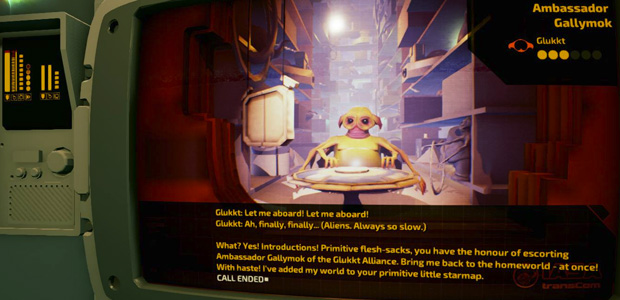
Here’s a few specific challenges we had early on with The Long Journey Home. First, and most importantly, the game is built on forward momentum. The universe is broken into systems, connected by Gates. Your job is to get Home. This alone is a massive deal for questing. We can’t send the player back to somewhere they’ve been. We can’t have them stick around too long in any one place. We can’t show much in the way of change on a local level, though there are a few exceptions to that, like accidentally infesting a planet with a destructive alien swarm. Or nuking it.
Second. The crew is alone and desperate. The player shouldn’t be thinking “Why don’t they just live with the Wolphax Knights,” or similar, because that diminishes the goal of getting Home. As much as we want the quests to be exciting and the universe fun to explore, as much of the game is rooted in the idea of homesickness and longing, especially in the crew’s banter and internal thoughts during the voyage.
Third. The crew is vulnerable. Any empire in the game could sweep in and crush them. However, their isolation is also felt in things like not having long-distance communication, not having bulletin boards for quests, etc. The one big exception we ended up making to this rule was that the first time you get credits, you get a generic bank account, though the original idea was that everything would be trade based. It was cool, but it was also a real pain in the neck, so in the end, credits won out.
Fourth. A ship doesn’t have many verbs available to it. Scan. Shoot. Communicate. Orbit. Salvage. Send down Lander. Fly away really, really fast. Not many more.
Fifth. Galactically speaking, nobody cares about or respects the crew. At best, you meet polite well-wishers. At worst, pirates and slavers who are quite happy to rip you to pieces and condemn their new human slaves to a lifetime at the bottom of a cobalt mine. Quests have to be interesting and feel worthy, obviously, but it wouldn’t make sense for everyone to expect you to solve all of their problems for them.
All of those are wrapped in a final, global pillar, that wherever possible, The Long Journey Home should offer the choices and opportunities that you’d actually have if you were there – including the freedom to break or ignore every quest, to make whatever friends or enemies you want, and make the most of your crew’s abilities to solve problems. There’s an old RPG saying ‘if you stat it, they will kill it’, usually used as a warning. Here, go right ahead. It’s a phenomenal scripting pain in multiple arses, but all to the best. If a ship comes up and asks you to do something, and you just shoot it, that’s a valid choice. Indeed, it can be a sensible one, especially when dealing with a mugger, or a ship trying to persuade you to take on infested goods. (But if you do, please, take a moment to think about the poor coders looking for edge-cases…)
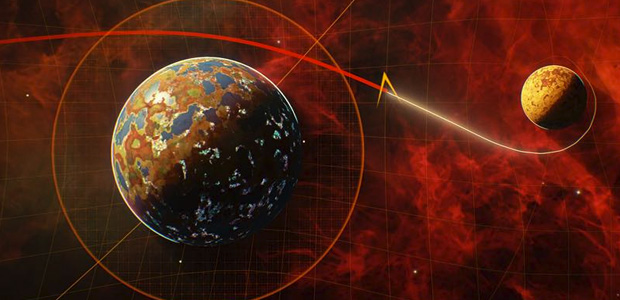
The cool thing about restrictions though is that they breed interesting ideas. For example, just because nobody’s going to ask you to find the lost treasure of their people doesn’t mean that you can’t do that, and face interesting situations because of that. Will they be glad to see it returned, or furious that some mere aliens are waltzing around with their equivalent of the Holy Grail? Likewise, not being able to send the player back to hand in quests or handle debriefing by e-mails or whatever lead to having to bring quest-givers back to the player. This really helps boost the feel of a living universe, and makes betraying someone feel much more personal.
(And oh, can you betray them. In an early quest for the Wolphax, a race of grasshopper style guys who like to play as glorious knights, you’re approached by a lowly squire to kidnap his beloved so that he can rescue her from the ‘evil aliens’. Another race will ask you to run important deliveries for them. But if you want to sell her to the slaver race and just open the box and keep what’s inside, you go right ahead. Of course, there are always consequences, but if you think you can handle them, hey, it’s your ship…)
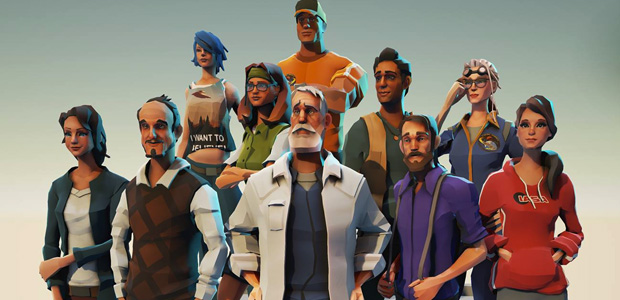
My favourite solutions to the problems though involve handling the verb problem. Enter the crew. A lot of space games treat the crew as little more than stats, while we wanted them to be both characters the player could feel for, and valuable parts of the mission. There are ten in total, of which you get four per game. Gather ‘artifacts’, go into the lab, and each will attempt to use their specialist knowledge to do something with it. The archeologist for instance, Siobhan, might take an old relic and be able to translate it. The researcher, Nikolay, might realise it’s a gun. Someone else might just break it.
Where things get interesting though is that we get to use these verbs to both offer abilities, and explore their characters. I said above for instance that if you’re on a courier quest, you can open the boxes. That’s true, but only if you have a crewmember willing to do so. If everyone’s a goodie-two-shoes type, you can’t force it. (You’re not one of them, or the Captain, per se, but more the ‘spirit of the crew’). This extends to dedicated ‘Crew Picker Quests’, where someone has to volunteer for something. Usually, it’s something horrible, like an alien torture probe designed to determine guilt through trial by ordeal, or agreeing to become a slave so that the others can go free. This whole system ultimately came from that problem that a ship can’t actually do much, and our characters who could… well, didn’t. After a couple of experiments on one of the game’s silliest quests, though, being able to bring them in via multiple vectors evolved from a cute feature to one of my favourite pillars of the experience.
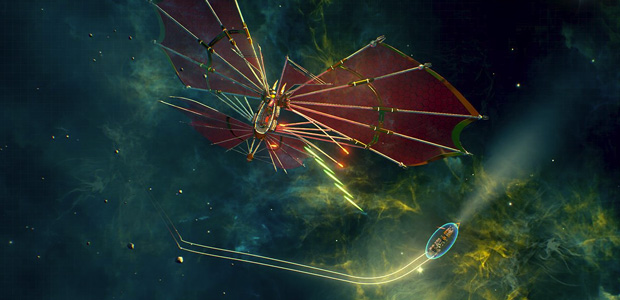
Another unique challenge for space games of course is handling the aliens. Aliens are really hard. If they’re too familiar, they’re just people with silly foreheads. If they’re too crazy, finding actual ‘game’ involving them becomes a nightmare. Do not get me wrong here. I love and revere and respect and would consider wrapping Star Control 2 in fur so that I could better cuddle it, but this is something that it did kinda cheat with. Its concepts were amazing, but in practice most alien encounters consisted of a really long conversation where they got to tell you all of this crazy stuff that wasn’t particularly shown once in game. There’s exceptions, of course. Many are genius. The Ur-Quan Civil War and their philosophies, which extend to being willing to talk properly. The Dynarri influence. The Spathi ships being psychologically perfect. But in most cases – most – the aliens didn’t actually do a whole lot of weird stuff except talk about how weird they were and hand over their ships. We needed ours to be more active.
In designing ours then, we took more of a ‘hat’ approach to things. You have your military focused race, you have your religious race, you have your space pirates and so on. It was necessary, partly because you only get four of the major races in any one playthrough, and because the quests ultimately needed a ground-level of familiarity. We came up with some really crazy aliens early on, but there’s just not all that much you can do with, say, an inflating sac that ultimately evolves into a space whale. Not that would feel unique to an inflating sac that evolves into a space whale, that is, rather than just a slightly dressed up FedEx quest to deliver ambergris or whatever.
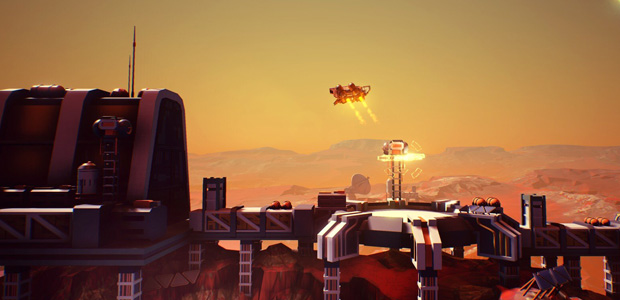
Instead the focus went on trying to give the different creatures depth so that the player sees different sides of them through their quests, through conversations with friends and enemies, through individual encounters, and so on. The trader race for instance, the Glukkt, may initially come across as being completely amoral, but no, they have a sense of honour and draw a line between good business and foul play. The Wolphax, the military race, are the exact opposite of your Klingons or whatever in that physically they’re pathetically weak insects, with their current love of battle stemming from the fact that nobody cares how tough you personally are when you’ve got ray-guns.
Most of the races haven’t been officially announced yet, but again, in quest design, a big part of the process was figuring out ways of not just presenting their hats, but playing with them a little bit. The dialogue system for the game for instance can track both what you say and what you do. Much like the Minbari of Babylon 5, some aliens take it as a compliment if you approach them with weapons raised, since it shows respect. Others take umbrage at the threatening action. Part of the fun is learning everyone’s quirks and making the most of them – including what they’ll take if you lose a fight. Borrowing from games like Risen, most of the galaxy doesn’t actually want to fight to the death unless really pushed, though that doesn’t mean they won’t, say, demand one of your crew to let the others continue their voyage.
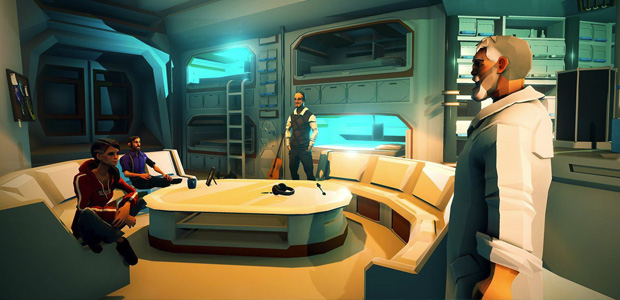
Now, obviously, how well we’ve done with all this of course remains to be seen. Fingers crossed. Either way, The Long Journey Home is due out next March/April, with both updates and weekly in-universe newsletters mostly coming out over on Facebook. For now, hopefully this has been a interesting look behind the scenes of what I’ve been working on this year and the thought processes that it’s easy to overlook in favour of just ploughing through, or choosing to do a cheap gag about instead of focusing. Unrelated, next week: How Tyranny is the new test of intellectualism.
I kid, I kid. And can’t wait to play it. After another billion words of alien dialogue.















The RPG Scrollbars: memories of evil and wickedness
Richard Cobbett on November 21st, 2016 at 1:00 pm.
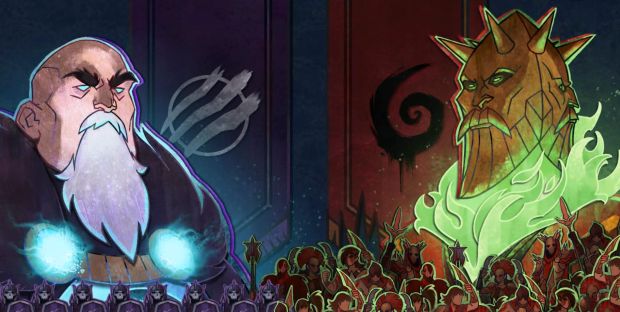
So, a confession. My plan for this week was to talk about Obsidian’s Tyranny [official site] – the game, not any rumours of Feargus Urquhart openly stealing puddings from the company fridge no matter how well labelled! Unfortunately, that plan hit a tiny snag… I haven’t had a chance to play much of it yet. A shame, simply because the genre is well overdue a game that, to quote, Kakos Industries, Does Evil Better.
This week then, a tribute to and call out for the games that at least did evil interesting.
Ultima VII: Baking Horror

Honestly, the whole of this game is a psychopath’s toybox. Exploding barrels, endless magic spells, poor jail construction and of course the Armageddon spell equal good times had by all. However, the most infamous act of evil – unless a shared hallucination, since it doesn’t work in the Exult engine that everyone uses to play this game now – involves a certain bucket of blood found at a grisly murder scene at the start of the game. That blood comes straight from the arteries of the town blacksmith, whose son Sparks joins the party for both comfort and revenge-seeking.
Where’s the evil? Here’s the evil. Ultima VII lets you make your own bread and isn’t too fussy about what liquid you use. Cue the Avatar of the Eight Virtues, paragon of righteousness, hero of the realm, part time Space Ace and future Titan of Ether… feeding a kid bread baked with his own father’s blood.
Tsk. Whatever happened to the noble hero who both saved the day and spent ages juggling the party after meeting up with a prostitute so that Sherry the Mouse could finally get laid?
Vampire: Bloodlines: Heather Poe
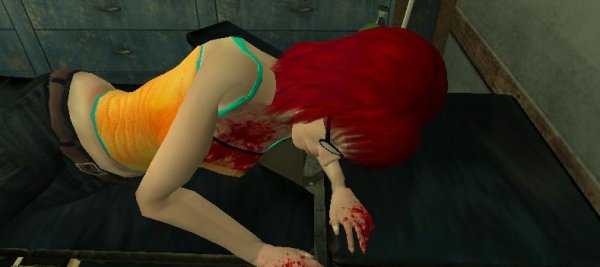
Vampire: Bloodlines generally does evil very well. You may not have a huge complicated scheme going, but you’ve only just been Embraced, and everyone around you has at least five to be getting on with. Typical quests involve hiding knowledge of the supernatural world from the mundanes, handling monsters less for ethical reasons as convenient ones, and of course, getting your own ghoul, Heather.
Generally, Heather gets brought up to talk about the dark relationship between the two of you – how trying to push her away is deliberately difficult, and it doesn’t take long to realise she won’t have a happy ending whatever you do. But, if you prefer, you can go the complete opposite way too, ordering her into slutty outfits and praising acts like kidnapping a guy for your dinner instead of being the most easily shocked vampire this side of NosferatOOOH!
Fallout 3: Megaton
A modern classic, I think, if one that the rest of the game struggles to live up to. It’s not simply that you’re asked to destroy an entire town. It’s the fact that you’re asked to destroy an entire town because it gets in the way of an old rich man’s view.
Other great Fallout 3 examples include sabotaging a woman called Moira’s dreams of creating the ultimate wasteland survival guide by completely bullshitting everything she asks you to research, with the possibility after that of doing the nuke and leaving her a radioactive ghoul – an eternity of broken dreams in the wreckage.
Knights Of The Old Republic: Mission: Kill Mission
Mission Vao is a young Twi’lek girl recruited early in the game, along with her Wookie companion Zaalbaar. Not too shockingly, he owes her a Wookie life-debt. But here’s the thing. You can press him into your service in much the sane way, and then order him to murder his former ward. True, it requires a little Force Persuasion to get him over his moral problems and persuade him that the life debt is more important than silly little feelings… and later, he regrets it and betrays the party… but hey. The Dark Side doesn’t need quitters.
Undertale: Killing Papyrus
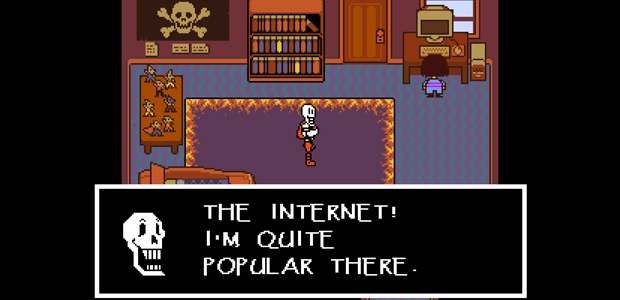
…you dick. An act second only to making the aquatic warrior Undyne chase you into the lava and fire of Hotland until she collapses, then going to get her a cup of water from a handy nearby water dispenser, and pouring it out on the ground in front of her face.
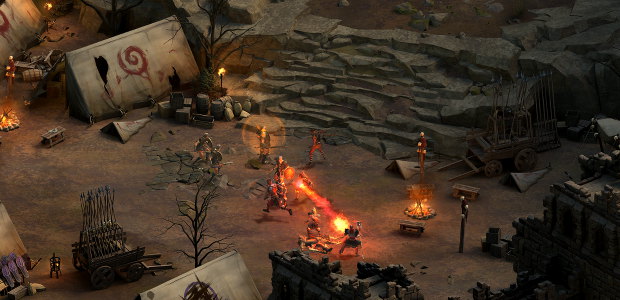
The downside of all of these of course is that aside from personal amusement, none of them exactly benefit your character long-term. That’s obviously the draw for Tyranny – that while you might be a bad guy for the sake of order or a bad guy for, well, the sake of it, you’re in a situation where bad guys rule. It’s an ongoing challenge for the genre to find stories where, say, a Neutral Evil mage can be as free to express themselves as the more typical Chaotic Good fighter, without just coming across as a crazed psychopath or the Joker without the sense of humour.
Personally, I’d prefer we just not think in those terms. It’s what leads to the other kind of necessary evil path – the path that’s deemed necessary, just to give the player choices. But it makes no sense for many games. The Witcher 3 for instance is no worse for the fact that there’s some stuff Geralt simply won’t do.
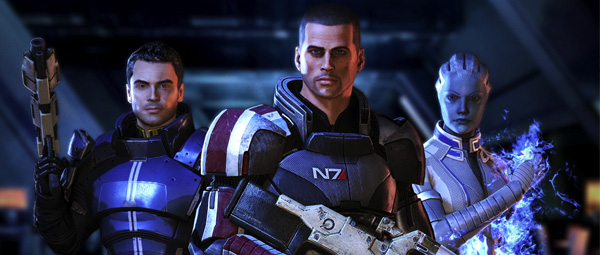
I far prefer Mass Effect’s approach to morality – where Shepard is always a hero, but one who favours diplomacy or fists – to BioWare’s early karma systems in Knights of the Old Republic, where falling to the dark side was mostly about coveting the cool powers and black underpants rather than a philosophical matter, or the attempt at something more subtle in Jade Empire’s open-palm and closed-fist system, which was an interesting attempt at providing moral equivalence until you realised that the designers kept forgetting.

Quite a few designers currently favour a similar but slightly different spin on things, with the idea that for every decision, it’s good to have the safe path, the refusal path, and the wackier path, catering to that desire to be a bit odd or deal with an obnoxious character in a fun way, without going all the way evil. It’s probably a better model for most RPGs too, being a good middle ground between the goodie-goodie traditional party and the classic “So You Recruited An Axe Murderer”.
That being said, I think we can all agree that there’s no better playground than the neutral worlds of somewhere like Britannia or Skyrim or Divinity: Original Sin, where it’s not the designer’s idea of how to have fun on the dark side of the alignment chart that allows for psychopathic good-times, but your own ability to break the system as well as breaking faces. The discovery that you can put a pot on someone’s head to prevent them seeing, then walk off with all their stuff, beats any official design option to try and take over the world instead of saving it. Sure, you might spend a little time in jail now and then, but I hear even Arkham can be quite relaxing for its inmates.
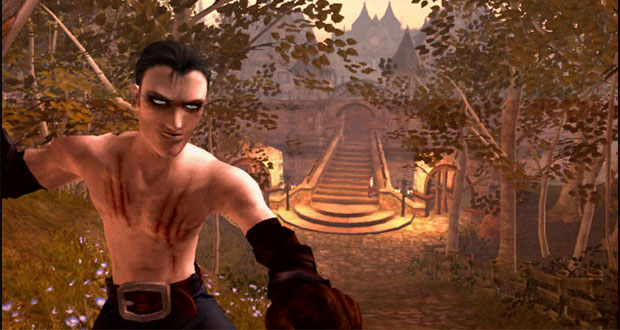
And so, to finish off – what are your favourite evil acts committed in games, from the scripted ones above to anything crazy you might have set up for yourself. A long line of exploding barrels for Chuckles the Jester for instance, or – and please pardon the link to The Other Place – cutting loose with the power of the God of Madness or the great rat plague. Mods are acceptable! It might be cheating, but if evil can’t cheat, who can?
Isn't the best armor in VtMB only available to characters that enslave Heather and get her killed? At least on the official patch.The downside of all of these of course is that aside from personal amusement, none of them exactly benefit your character long-term.
Richard misremembering said:However, the most infamous act of evil – unless a shared hallucination, since it doesn’t work in the Exult engine that everyone uses to play this game now – involves a certain bucket of blood found at a grisly murder scene at the start of the game. That blood comes straight from the arteries of the town blacksmith, whose son Sparks joins the party for both comfort and revenge-seeking.
Where’s the evil? Here’s the evil. Ultima VII lets you make your own bread and isn’t too fussy about what liquid you use. Cue the Avatar of the Eight Virtues, paragon of righteousness, hero of the realm, part time Space Ace and future Titan of Ether… feeding a kid bread baked with his own father’s blood.
Prostituting your "wife" in Fallout 2 were always funny, good method o concluding quests, lets not fight mate ere rape me wife.
No MoTB, I see.







